Kindly note that orders placed on Thursdays after 8AM (EST) will be shipped the following week (some exceptions may apply for local deliveries in the NYC area).


Item added to your cart
The art of food presentation: tips and techniques.
The art of food presentation goes way beyond garnishing. It's a visual way to introduce the meal's culinary story and give the diners a glimpse of the flavor that awaits them. If you've ever heard the phrase “one eats with his eyes first”, in the culinary world, this statement is unequivocally true. If there's one thing hospitality experts agree on, it's that food presentation is crucial to the entire dining experience.

The aesthetic arrangement of food on the plate is a chef's silent message to the diners, inviting them to savor not just the taste but the culinary journey. If you're finding food presentation difficult, you'll want to read this article to the end, as we will unearth everything you'll need to know to make your food presentation a masterpiece.
Importance of visual appeal in food preparation
Having known that we first eat with our eyes before our mouth, it's a no-brainer why visual appeal is as crucial as the food itself. Here are some reasons why it matters:
Influence diners' perception and acceptance of food
The visual presentation of the food is the first thing guests will notice. A well-presented dish often entices eaters and leaves a memorable first impression. Research has shown that plating food in an aesthetic manner makes diners see the food as more sophisticated and, consequently, are ready to pay more.

Enhanced Appetite
Colors, shapes, and food arrangements can add energy and trigger hunger. Bright colors like red, yellow, and green revive appetite and present food as natural. Also, complementary colors add a visual appeal to the food. When these colors are blended properly, it raises diners' anticipation of the food, and they are ready to eat more. The color of your plateware also highly affects the overall presentation which we will address in this article.
Reflects Quality
The dish's visual appeal speaks volumes about the food preparation, and the level of care to execute the dish. Also the environment where the guest is, the cleanliness of the linens, glassware or silverware, are elements that will tell a lot about the hygiene of the food and venue. Even if it's a high-end restaurant and food is presented in a shabby manner, or the venue is not well looked after, then diners will go with the notion that the dish was prepared in an unsafe environment using low-quality ingredients and that the standards of the venue are low.
Marketing and Social Shares
We are in an age where a simple post on the internet can go viral and gather over a million views in a few hours. Suppose visitors love their food presentation and dining experience. In that case, they are most likely to take pictures of the food or environment to post on their social media handles, which has a high possibility of attracting first-time visitors and repeat customers if the post goes viral. For the hospitality industry, this is earned marketing and low-cost advertising spreading across the social media network.
Techniques to Enhance Food Presentation
Whether you're a professional chef or a home cook, your plating process can make a big difference in how it is received. Here are some top food plating techniques to enhance food presentation:
Landscape plating

Landscape gardeners inspire this style of plating. It comprises long and low placement of food across the plate. It also gives a natural and artistic look to dishes, enhancing the flavor and texture of the ingredients. This style can be used on any dish, both main dish, appetizers, and desserts . To get the best output, cut each item into bite sizes.
Classical plating
It is a traditional and symmetrical plating technique that allows diners to see the elements on the plate vividly. This method uses starch, vegetables, and the main for the food arrangement. You'll have to view your plate like a clock. Protein should be placed between 3 and 9 o'clock, carbohydrates/starch between 9 and 12, and vegetables should be placed between 12 and 3.
Free form plating

The free-form plating allows for a more relaxed and asymmetrical food placement. Unlike the classic plating, where each element has a specific place, the free form allows for creativity. You can use cooking methods like smearing, scattering, or stacking to create a visually appealing dish.
Food on organic material techniques
This food presentation style uses natural materials like wood, stone, and slate as plating devices. It gives a rustic and natural feel to the dishes. You can use this technique for different occasions so long the plating and materials are safe, clean, and suitable for the food.
The bathing technique

The bathing technique presents the main dish in a pool of sauce or broth. This food plating style creates a more flavorful and eye-catching look for your dish and also the texture of the food. You can use the bathing technique for Tortellini with shellfish sauce or for a soup consommé, you can place your vegetables in the bowl and pour the soup broth at the table for a wow effect!
Creative Plating Ideas to Impress Your Guests

Whether you're serving up modest fare or fine cuisine, there's no one way to plate food. However, some important factors must be considered when presenting your food. But the rule of thumb is that the food's taste should match its looks. Here are the top food plating ideas that will help you plate food like a chef.
Tailor plating style to your evening’s concept.
You must give diners a more cohesive experience. Ensure your plating style matches your theme. If you have ethnic and casual dining, a hearty presentation using traditional dishware will be most suitable. For a fine-dining feel, using wares that exude luxury and affluence will be perfect, while for a family-style service, you can aim for colorful large plating. To get the most suitable plating for your party, you'll have to study your theme and guests to know what best fits.
Simplicity is key
One way to ensure simplicity is to pick one ingredient to be the spotlight on the plate. Clutters cause distractions, and most times, diners get confused about where to begin. To get this right, you should incorporate negative space. It will help draw diners' attention to the main element of the dish. Also, ensure that the plate complements the dish. Don't be under pressure to fill up the plate. You'll have to get different plates and proportions for different dishes.
Height and layers
Think of this like a landscape; placing elements at different heights adds depth to grab attention. For example, you can place mashed potatoes as your base and layer a piece of grilled chicken on top, then garnish it with steamed asparagus while standing upright. With this, you'll have starch at the bottom, protein in the middle, and vegetables upwards.

In French cuisine, the selection of tableware is vital to the overall presentation of the dish. Carefully choose plates, bowls, and platters that not only match but elevate the aesthetic qualities of the food. The design of the tableware is often minimalistic, directing attention squarely on the culinary creation itself. For your tablewares you can use white or light shades; they'll blend well with garnishes and sauces.
Use suitable tools
Using the right tools is crucial when plating food. It helps elevate the presentation of your dish to match the effort you've put into the meal preparation. Some of the common tools you'll need include a precision spoon, sauce squeeze bottle, tweezer, brush, round cutters, and spatula. These tools allow for greater control and finesse.
Utilizing Colors and Textures in Food Presentation
Colors and textures elevate the dining experience. When applying to food placement, you must ensure that there's a balance. Aside from this, it would be best if you considered contrast. When contrasting colors are used, the presentation stands out—for example, using a bright red color on a bed of green lettuce. There are no rules. You're free to use any style, seasonal colors, or color wheels, but you must ensure that the colors are harmonious, i.e., they blend perfectly. Garnishes add texture, and cooking techniques like grilling or broiling can add texture to your dish.
The Role of Garnishes and Edible Decorations
Add textural contrast and flavors: Some garnishes, such as crouton on soup or fried onions and shallots, toasted nuts on salad, add textural contrast that makes food taste better. Also, garnishes like fresh herbs or citrus zest add a complementary taste to the dishes.
Signals ingredients and culinary creativity: Garnishes give visual clues about the ingredients used to prepare the dish . For example, if a diner picks up the menu and sees Rosemary on a lamb dish or a mint leaf on a dessert, they know what flavors to expect. Garnishes let chefs show off their creative and artistic skills when presenting food.
Edibility: Unlike inedible decorations like toothpicks and ornamental skewers, garnishes could be eaten along with the dish. This offers an exquisite dining experience where every element on the plate contributes to both the flavor and presentation.
Final thought
Mastering the art of food presentation is akin to narrating a story that engages the guests’ senses even before the first bite. It's about harmonizing the aesthetics with the flavors, creating not just a meal but an immersive dining experience that will be complete by considering elements such as linen, tableware, "art de la table," flowers, music, and lights.
Also, incorporating BBQ grill ideas and popular French gourmet items can introduce a unique and savory element to your presentation. French cuisine is celebrated not only for its exquisite flavors but also for its artistic presentation, providing valuable insights into elevating your plating style.
- Choosing a selection results in a full page refresh.
- Opens in a new window.
- Value of Culinary Education
- Financing Your Education
- Austin Student Life
- Boulder Student Life
- Culinary & Pastry Careers
- Hospitality Careers
- Health & Wellness Careers
- Food Entrepreneurship
- Success Stories
- World of Food & Drink
- Recipes & Techniques
- Culinary Arts
- Baking & Pastry Arts
- Blog Search
- Financial Aid
- Career Services
- Online Culinary Arts Programs
- Austin Culinary Arts Programs
- Boulder Culinary Arts Programs
- Online Baking & Pastry Programs
- Austin Baking & Pastry Programs
- Boulder Baking & Pastry Programs
- Food Entrepreneurship Programs
- Plant-Based Programs
- Holistic Nutrition & Wellness Programs
- Hospitality & Restaurant Operations Management
- Enthusiast Cooking Classes
- Find Your Program
- Tuition & Fees
- Financial Aid Overview
- Federal Financial Aid Programs
- Scholarships & Grants
- GI Bill ® for Military & Veterans
- Contact Financial Aid
- New Student Checklist
- Military & Veterans
- High School Students
- International Students
- Student Stories
- Admissions Overview
- Application Process
- Open Houses & Events
- Schedule a Tour
- Student Housing
- Online Programs
- Austin, Texas Campus
- Boulder, Colorado Campus
- Our Chef Instructors
- Farm To Table ® Experience
- Accreditations
- Vision, Mission, & Core Values
- Alumni Profiles
- History & Timeline
- Request Information
- Student Login
- (855) 955-7555
- Search for:
The Art of Food Presentation
Why is food presentation important? Here’s how plating techniques can create a multi-sensory experience for diners.

Take the Culinary Career Survey
We’ve compiled a checklist of all of the essential questions into one handy tool: career options, culinary interest surveys, educational opportunities, and more.
Clicking the "Get the Survey Now" button constitutes your express request, and your express written consent, to be contacted by and to receive automated or pre-recorded call, texts, messages and/or emails from via phone, text, and/or emails by Auguste Escoffier School of Culinary Arts at the number(s)/email you provided, regarding furthering your education and enrolling. You understand that these calls , texts, messages and/or emails may be generated using an automated or pre-recorded technology. You are not required to agree to receive automated or pre-recorded calls, texts, messages or emails as a condition of enrolling at Escoffier. You can unsubscribe at any time or request removal of street address, phone number, email address via Escoffier website .
You’re sitting down at that new restaurant everyone’s been raving about. The server at last brings out the plate… and you finally get it.
A savory spinach-and-feta crêpe that makes your mouth water just looking at it. A steaming bowl of butternut squash soup with a dollop of sour cream and sprinkle of chives. Sparkling crimson raspberries floating in a fizzy flute of champagne.
Food is not just sustenance, but a rich experience . While taste is important, food that is plated and presented well is more attractive to customers and can set the tone for the entire restaurant.
Presentation and plating can draw attention to the specific ingredients in a dish, whether for aesthetic or practical reasons. For anyone considering a career as a chef , a strong grasp of plating and presentation techniques is vital for continued professional development. These skills help culinary professionals stand out as they train, stage, and begin to work in a variety of environments.
Why Is Food Presentation Important?
Think about a perfectly plated meal you’ve enjoyed that engaged all five of your senses. Maybe it was an expertly crafted uramaki roll with razor thin avocado slices, a dusting of panko, a drizzle of unagi eel sauce, and a ginger-wasabi rose embellishing the plate’s rim. Between the greens and oranges, the spicy and salty, the shapes and textures of the garnishes… you may have decided to make the restaurant your go-to sushi joint.
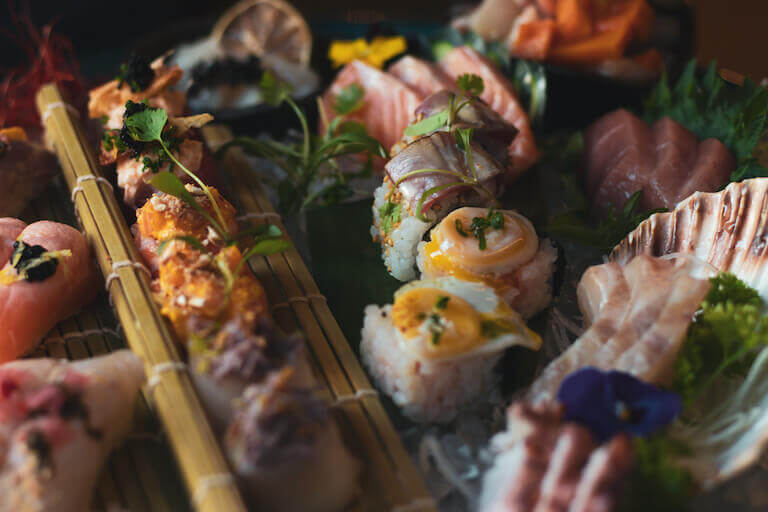
An experience like that sticks with a customer for much longer than a meal that involves mediocre presentation, and creating that kind of memory is exactly what chefs are looking for. Well-executed food presentation can create a sense of professionalism in the mind of eaters and offers an exciting element of a meal that many can’t recreate with the same skill in their own cooking efforts.
In the digital age, strong presentation can also make dishes more apt to be photographed and shared via social media . While there are definitely pros and cons around the prevalence of pre-meal photos shared on sites like Instagram, it can be an effective way to generate attention and sales for many restaurants.
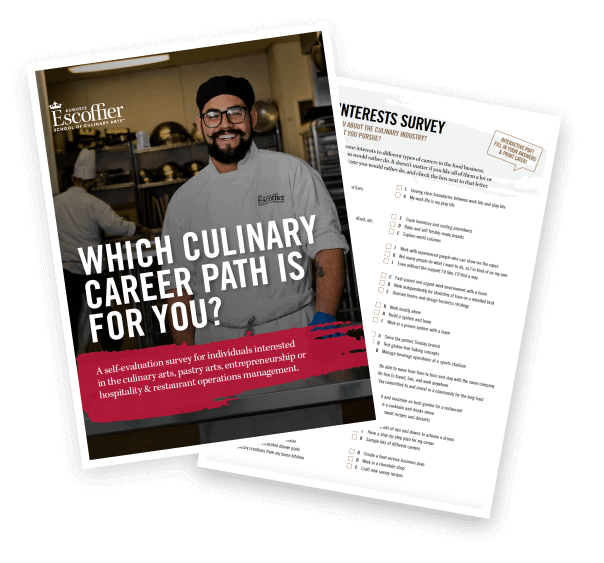
Food Plating Techniques
Important considerations to make regarding the element of appearance include the color, size, and pattern or texture of the plate.
It may be especially helpful to look at the plating and presentation process as generally following a series of steps. This starts with choosing a plate, then deciding how the main dish and core sides are arranged or layered. From there, it’s common to move onto sauces to create visual contrast and shapes that aren’t easily rendered with more solid food. Finally, the garnish provides a finishing touch.
Bright colors work well against a dark background, while more neutral or subdued colors can use a white background to create some visual excitement. Besides the colors of the foods, different techniques for adding color might include the use of sauces, spices, and garnishes like fruits or flowers.
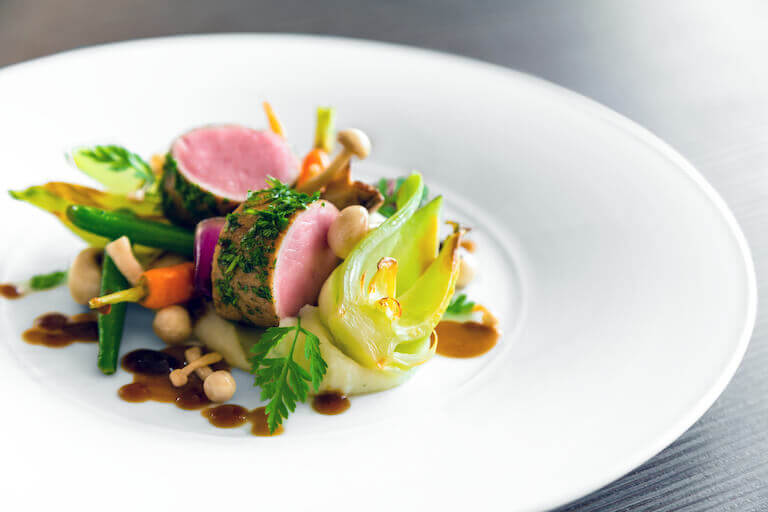
Thinking about the ratio of food to plate is another technique that involves some artistry. Serving a smaller portion of food on a large plate for more white space, or serving dishes in miniature receptacles can be interesting ways to present food masterfully.
Of course, you have to balance practical and artistic considerations – food should never be difficult to eat nor excessively messy because of the vessel it’s served on or in.
Beyond plates and bowls, the arrangement of foods is key. There should be a star item, one that takes top billing and is also likely the largest portion on the plate. This approach avoids visual competition and instead allows the sides to support the main dish.
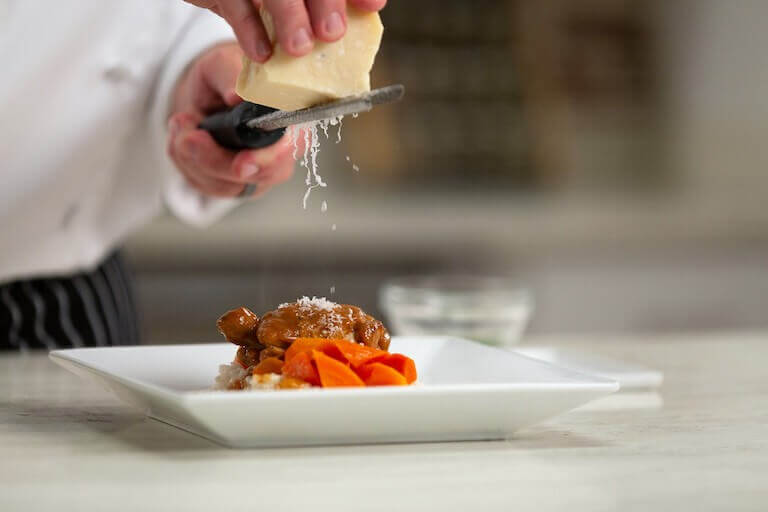
It’s also important to think in three dimensions, as the height of food on a plate can also entice diners. Stacking items for a layered look can be visually appealing and make the meal appear more substantial than it would scattered across the plate.
Skills Involved in the Plating Process
How can you make sure you plate effectively and provide the best possible presentation to customers? There are many different considerations, from how to incorporate sauces and garnishes to the knife skills needed for flourishes like a vegetable rosette, and the plate you use is undeniably foundational.
While earning a culinary arts degree or diploma from Escoffier, students can explore techniques and hone skills to help them with plating during their careers. Check out Escoffier’s culinary arts programs or talk to an Admissions Representative to explore your options.
Here are some other articles you might like:
- How Restaurants Get Michelin Stars: A Brief History of the Michelin Guide
- Gen-Z Food Habits & Influences
- The Latest in Food Tech
This article was originally published on February 20, 2019, and has since been updated.
*Information may not reflect every student’s experience. Results and outcomes may be based on several factors, such as geographical region or previous experience.
Latest Articles
Beef carving 101: how to cut corned beef, roast, and more.
Discover the art of beef carving! Learn to prepare and cut corned beef, tenderloin, and prime rib with expert tips in this comprehensive guide.
Fine Dining Etiquette: A Guide to Rules and Best Practices
Curious to learn more about fine dining etiquette? From basic manners to fine wine selection, discover the special rules and expectations of high-end restaurants!
7 Restaurants in Boulder Every Culinary Student Should Visit
Indulge in Boulder's finest dining against a backdrop of Rocky Mountain vistas. Discover the don’t-miss restaurants to inspire your culinary creativity.

Subscribe to the King of Chefs Blog
Get the King of Chefs email newsletter delivered to your inbox weekly. You'll get everything you need to know about culinary & pastry careers, food entrepreneurship, financing your culinary education, and more.
The Essential Culinary School Planner & Checklist

We’ve compiled a checklist of all of the essential questions into one handy workbook: Career options, academic plans, financing your education, and more.
Clicking the "Get the Workbook Now" button constitutes your express request, and your express written consent, to be contacted by and to receive automated or pre-recorded call, texts, messages and/or emails from via phone, text, and/or emails by Auguste Escoffier School of Culinary Arts at the number(s)/email you provided, regarding furthering your education and enrolling. You understand that these calls , texts, messages and/or emails may be generated using an automated or pre-recorded technology. You are not required to agree to receive automated or pre-recorded calls, texts, messages or emails as a condition of enrolling at Escoffier. You can unsubscribe at any time or request removal of street address, phone number, email address via Escoffier website .
- PRO Courses Guides New Tech Help Pro Expert Videos About wikiHow Pro Upgrade Sign In
- EDIT Edit this Article
- EXPLORE Tech Help Pro About Us Random Article Quizzes Request a New Article Community Dashboard This Or That Game Popular Categories Arts and Entertainment Artwork Books Movies Computers and Electronics Computers Phone Skills Technology Hacks Health Men's Health Mental Health Women's Health Relationships Dating Love Relationship Issues Hobbies and Crafts Crafts Drawing Games Education & Communication Communication Skills Personal Development Studying Personal Care and Style Fashion Hair Care Personal Hygiene Youth Personal Care School Stuff Dating All Categories Arts and Entertainment Finance and Business Home and Garden Relationship Quizzes Cars & Other Vehicles Food and Entertaining Personal Care and Style Sports and Fitness Computers and Electronics Health Pets and Animals Travel Education & Communication Hobbies and Crafts Philosophy and Religion Work World Family Life Holidays and Traditions Relationships Youth
- Browse Articles
- Learn Something New
- Quizzes Hot
- This Or That Game
- Train Your Brain
- Explore More
- Support wikiHow
- About wikiHow
- Log in / Sign up
- Food and Entertaining
- Food Preparation
How to Beautifully Plate and Present Food
Last Updated: May 25, 2024 Approved
Starting With Beautiful Food
- Plating a Meal
Presenting Tricky Dishes
Expert q&a.
This article was co-authored by JoAnna Minneci . JoAnna Minneci is a retired Professional Chef based in the Nashville, Tennessee area. With 18 years of experience, Chef JoAnna specialized in teaching others how to cook through private cooking lessons, team-building events, and wellness and nutrition classes. She also appeared in numerous television shows on networks such as Bravo and Food Network. Chef JoAnna received Culinary Arts training from the Art Institute of California at Los Angeles. She is also certified in sanitation, nutrition, kitchen management, and cost control. There are 18 references cited in this article, which can be found at the bottom of the page. wikiHow marks an article as reader-approved once it receives enough positive feedback. In this case, several readers have written to tell us that this article was helpful to them, earning it our reader-approved status. This article has been viewed 613,051 times.
Things You Should Know
- Cook meals with a variety of colors and complementary textures to give your meal some visual appeal even before plating.
- Default to white plates, leave 1/3 of the plate empty, and add different foods in odd numbers to achieve a balanced look.
- Layer proteins or main courses on top of filler foods like rice or noodles, and use herb or sauce garnishes to add finishing touches.

- When you're planning meals, think ahead about the colors you want to feature on the plate. You might not be able to represent all the colors of the rainbow at every meal, but challenge yourself to have as much color as possible.
- If you realize you're about to serve several like-colored foods, like grilled chicken and mashed potatoes, adding a serving or two of fruits and vegetables is a fantastic and easy way to add pops of color. The richest greens, oranges, reds, purples, blues, pinks, and yellows on your plate probably take the form of fruits and vegetables.
- If you're not sure how to add color, utilize garnishes. [3] X Research source Nearly any savory dish is well-served by a sprinkling of fresh chives, parsley, dill, or mint. Lemon and lime wedges are welcome alongside poultry and seafood dishes.

- Lightly steam them instead of boiling them. [4] X Research source Steaming vegetables makes them look appetizing and flavorful, while boiling creates the opposite effect. [5] X Research source Take broccoli, for instance: steaming broccoli turns it a fresh, bright green, and each floret retains its shape and texture. Boiling broccoli results in a mushy texture and a paler color, which isn't as pretty on the plate. The same holds true for asparagus, carrots, green beans, and many other vegetables.
- Roast or sauté them with a little oil or butter. Roasted or sauteed vegetables look quite appetizing when they're allowed to caramelize a little in oil or butter. The bright orange or green of the vegetable is offset by brown, crispy spots. It's a delicious way to cook vegetables.

- There are exceptions to the rule of searing your meat. For example, if you're serving braised beef , you'll have to think of creative ways to make the meat look appetizing even though it doesn't have a crispy crust. Serving it with a sauce is a good way to add visual interest.

- Fried foods often continue browning a bit after they've been removed from the hot oil. Carefully monitor foods as you're frying them to make sure they don't get too dark.
- Take pains to handle the fried foods gently so they look appetizing when you're ready to plate them. For example, if you need to check whether a piece of fried chicken has reached the correct internal temperature, stick the meat thermometer in a place where the resulting hole won't be visible. [8] X Research source

- The way you handle the food just after it has been cooked, and before it is plated, can really affect the texture. Pasta, for example, should be kept in water or tossed in a bit of oil just after cooking so that it doesn't start to clump. [9] X Research source Fried foods should not be covered with airtight lids because the heat from the food will end up steaming the breading and causing the food to get soggy.
- Once the food is on the plate, a spritz of oil or water can improve its visual appeal if it looks too dry.

Plating it With Care

- That said, there are exceptions. If you have a set of special plates with a pattern or a certain color scheme, it's fine to use them. Just make sure they complement the food you're serving instead of vying for attention.
- Don't forget to take the rest of the table into consideration, too. Cutlery, glasses, and linens will enhance the overall appearance of the dish upon the table.
- When looking for interesting tableware, try going to Asian grocery stores, craft or flea markets, and antique stores. You can find some very interesting tableware from all of these sources.

- As a general rule, half of the food on the plate should be comprised of vegetables, one fourth should be comprised of meat or another protein, and one fourth should be comprised of a starch.
- Start plating food in the center of the dish and work outward from there so that the food is centered in the middle of the plate.

- To quickly add some crunch to a dish, try topping it with some crushed, roasted walnuts, almonds or pepitas.
- A dollop of crème fraiche or some pieces of goat cheese can add a soft, creamy texture to savory dishes. Whipped cream or pastry cream is a good way to add a soft element to sweet dishes.

- An easy way to start layering food is to serve the protein on a bed of starch. For example, serve a kabob on a heaping of rice, or serve grilled swordfish on a pile of mashed potatoes.
- You can use sauces to layer as well. Ladle a pool of au jus, marinara, or whatever sauce you're using into the center of the dish, and arrange the other elements of the dish on top.
- Aim to make foods look bigger, not smaller. Fluff up your salads, for example, instead of smoothing them down. Create a little cross-hatched stack of cooked asparagus instead of presenting it in one flat layer. [17] X Research source

Adding Appetizing Touches

- If you serve a dish with lemon or lime wedges, consider creating slender, pretty twists instead of slicing them into thick wedges. This might entice the diner to actually use the garnish instead of scooting it to the side of his or her plate!
- Think outside the box and use garnishes you might not normally consider. Sprinkle a dash of cinnamon over a chicken dish, or a handful of pomegranate seeds over an otherwise ordinary salad. Choose garnishes that add a burst of both flavor and color.
- In many cuisines, flowers are an acceptable garnish or a large inedible leaf sitting underneath the food. In broader Western culture, it's recommended that nothing inedible be served on the plate. As well, since certain garnishes can affect the flavor, choose carefully.

- Rather than just pouring a sauce over your food, consider putting it in a squeeze bottle so you can create a pretty swirl or pattern. [19] X Research source If you don't have a squeeze bottle, put the sauce in a plastic food storage bag, cut a small piece off one of the corners, and squeeze the sauce through the bag.
- Don't overdo it. The key is to add a touch of color, flavor, and texture without overpowering the main part of the dish.

- If you're serving the pasta with a protein, arrange it attractively on the heap of pasta. For example, if the dish includes shrimp, place the shrimp on top instead of burying the pieces inside the pasta heap.
- Just before serving, you can mist the pasta with a bit of olive oil to make it glisten attractively.

- Soups and stews tend to splash and run, so it's also important to make sure that the sides of the bowl or plate you're serving them in are wiped clean before serving.
- Casseroles might also come out on the brown side. Serving them alongside a bunch of fresh salad greens is a good way to offset the neutral-looking main dish.

- Use a cookie cutter to create a neat shape. A star or leaf-shaped brownie will look more interesting than your basic square.
- Serve it with mint. Adding a few fresh sprigs is a great way to enhance many desserts, especially fruity ones.
- Sprinkle cocoa, cinnamon or powdered sugar on top. Choose the powder that contrasts in color to the dessert you made.
- Sprinkle crushed peppermints on top. It'll look like you topped your dish with pink glitter.
- Speaking of glitter, add edible glitter to the dish to take it over the top.
- When all else fails, plate it with a swirl of whipped cream. [23] X Research source You can pipe it through an icing bag fixed with a star-shaped tip to create a visually pleasing shape.

- Try keeping all presentation of the food relevant and simple. A nice formal dish is great for a celebration, but even simple meals can be improved with the addition of some herbs. Thanks Helpful 0 Not Helpful 0
- Read current cooking books and magazines for ideas. Your local library is a wonderful resource and many culinary magazines are now available for download, allowing you to read the recipes in the cooking area straight off your iPad, eReader, or other device. This also enables you to decorate a table with the electronic device as a reference! Thanks Helpful 0 Not Helpful 0
- There are now plates that keep food hot (patented). An excellent final touch for certain delicious hot recipes (Especially if they are expensive and time-consuming to prepare). Thanks Helpful 0 Not Helpful 0

Things You'll Need
- Food magazines and cookbooks
- Ideal dinnerware and tableware
- Inspiration from recipes and restaurants/cafes that you like
You Might Also Like

- ↑ JoAnna Minneci. Professional Chef. Expert Interview. 23 November 2021.
- ↑ https://www.huffingtonpost.com/2012/08/13/plating-food_n_1763865.html
- ↑ https://www.webstaurantstore.com/article/200/basic-guide-to-food-presentation.html
- ↑ https://www.thekitchn.com/how-to-steam-vegetables-cooking-lessons-from-the-kitchn-108512
- ↑ https://www.professorshouse.com/steaming-versus-boiling-vegetables/
- ↑ https://www.thekitchn.com/how-to-sear-meat-47333
- ↑ https://www.bonappetit.com/test-kitchen/how-to/article/learning-to-fry
- ↑ https://www.epicurious.com/expert-advice/how-to-use-a-meat-thermometer-article
- ↑ https://www.huffpost.com/entry/texture-of-food-cheap-spaghetti_n_5b60c302e4b0b15aba9d7d4e
- ↑ https://www.today.com/food/how-plate-your-food-pro-celebrity-chefs-reveal-their-secrets-2D80186757
- ↑ https://blog.kitchenaid.ca/10-tips-plating-food-like-a-pro/
- ↑ https://www.tablespoon.com/posts/how-to-plate-like-a-chef
- ↑ https://startcooking.com/seven-ways-to-present-food-like-a-chef
- ↑ https://timesofindia.indiatimes.com/life-style/food/food-reviews/Plate-your-food-like-a-pro/articleshow/32962204.cms
- ↑ https://www.thekitchn.com/tip-for-plating-pasta-perfectly-264049
- ↑ https://www.mirlandraskitchen.com/how-to-decorate-with-whipped-cream/
- https://www.youtube.com/watch?v=ihxsCYijU20
About This Article

When you’re plating food, try to visualize what the finished product will look like. Only fill the plate about two-thirds of the way, since the negative space will accentuate the appearance of your food. As you add elements, remember that odd numbers look more appealing than even numbers, and try to group foods with different textures near each other. Stacking and layering foods is a good way to play with height, which can create even more visual interest on the plate. For tips on choosing garnishes to finish your dish, keep reading! Did this summary help you? Yes No
- Send fan mail to authors
Reader Success Stories
Feb 14, 2017
Did this article help you?

June Bannister
Jun 16, 2017
May 5, 2016
Jun 20, 2017
Daniel Sharifi
Mar 25, 2017

Featured Articles

Trending Articles

Watch Articles

- Terms of Use
- Privacy Policy
- Do Not Sell or Share My Info
- Not Selling Info
Get all the best how-tos!
Sign up for wikiHow's weekly email newsletter
Call Sales: +1 (833) 437-3835
13 Food Presentation Ideas for an Unforgettable Culinary Experience
Sydney Kida | May 28, 2022 |
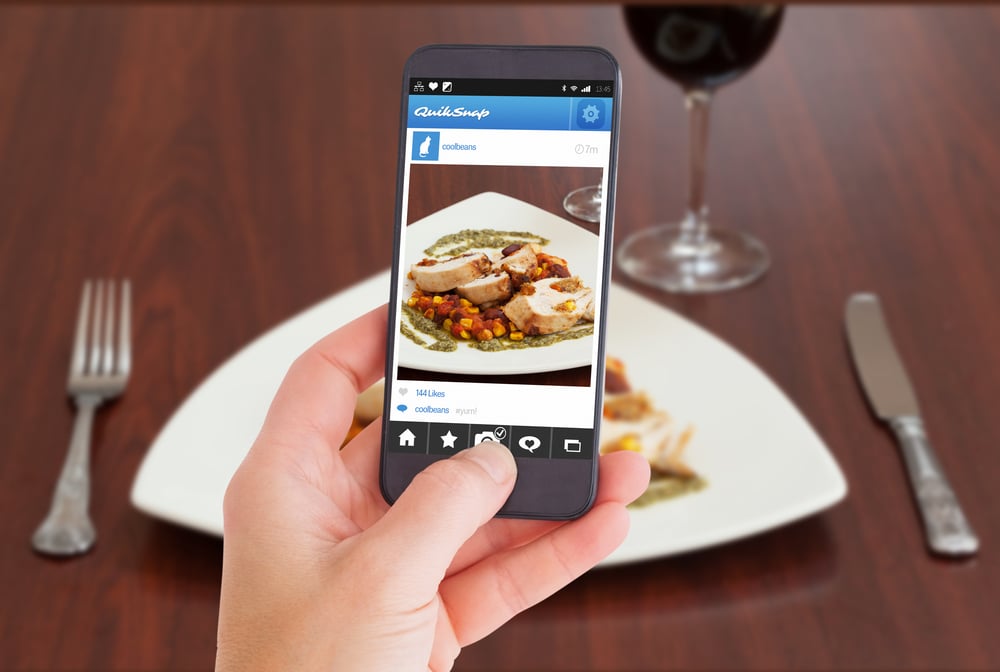
Eating is a sensory activity, and that doesn’t mean just taste — the culinary experience engages all the senses. That means texture, taste, aroma and, in some cases, even sound (think: the sizzling of fajitas or sparklers atop a cake). When it comes to cuisine and the customer experience, how the food looks when it comes out of your kitchen is just as important as how it tastes.
Need some food presentation ideas to take your dishes to the next level? We’ve got the details on why you need to step up your plating game, as well as how you can do it with 13 creative food presentation ideas sure to impress.
Why Food Presentation Matters
We eat with our eyes first. You can put photos of beautifully arranged food on a restaurant menu and guests will point and say, “I’ll take one of those!” when without the photo, they wouldn’t have even considered it. Similarly, an artfully arranged pastry display in a cafe or bakery window will entice guests to come inside to see if the food tastes as good as it looks.
Whether you’re a fast-casual establishment with a laid back vibe or a high-end restaurant with elevated and sophisticated dishes, presentation turns a regular meal into a memorable customer experience. People are drawn to beautiful things and let’s be honest, first impressions are everything.
In today’s world of social media and influencer marketing, unique and beautiful food presentation increases the likelihood of a guest posting a photo to their social media and tagging your eatery. That’s powerful positive publicity and some serious word of mouth marketing – and it’s free ! Plus, people are more likely to try out restaurants recommended by a friend, especially if the dishes look thoughtfully planned and carefully curated.
On the flip side, sloppy or unappetizing presentations can result in negative reviews online. Reviews are forever when written on the Internet and 94% of today's consumers check online reviews and photos before choosing a place to eat.
Incorporating interesting food presentation ideas is an opportunity to get creative, show off a chef’s skill, and provide that “wow” factor to the dining experience. Just make sure the substance matches style! Unique dishes mean guests can only get them at your restaurant, and this uniqueness inspires loyalty. Plus, guests will gladly pay more for an artfully designed meal.
Creative Food Presentation Ideas , Tips & Tricks
A creative presentation of food is the final touch to a meal. Here are thirteen tips and tricks for presenting food, ranging from simple dishes to fine dining:
Edible Flowers
Nothing classes up a dish like dainty flowers. Flower petals add pops of color in salads, soups, desserts, and even entrees. Because flowers are a beautiful and unexpected thing to appear on a plate, they are memorable. Just make sure they’re edible !
There are many food presentation techniques related to sauces that a chef can experiment with. A guest’s name spelled out in chocolate drizzle on a dessert plate is a fun way to celebrate a birthday. Dots, smears, and swirls of bright sauces add visual interest for both sweet and savory dishes. Practice with piping bags or squeeze bottles to perfect the hand control required for these sauce techniques.
Food presentation isn’t just about what to add to the food or how to style it. The tablecloth, place setting, and cutlery play a part, too. For in-restaurant dining, make sure your tables are welcoming with candles or flowers. If a guest is ordering to-go, the packaging is part of the visual appeal. So often en route, the food’s presentation gets ruined. To prevent that, choose high quality, eco-friendly sectioned packaging that keeps the food in place.
Deconstructed
As far as simple food presentation ideas go, deconstructing is a classic. Eating traditional meals in a deconstructed way makes humdrum food feel like a new experience entirely. For example, a deconstructed burger and fries encourages a bite of fries with onion and tomato — it’s a new way to enjoy an old classic. Having a focal point, like a red onion ring in the center, keeps it from looking sloppy.
For a fine dining steak presentation, the best way to elevate it is through height and layers. Visually, steak is flat and typically darker in color. Adding a colorful garnish with some height to it makes it look more exciting. If you don’t want to go for height, create layers to the dish for a similar effect. Cut the steak horizontally and fan it out to create layers. Place the steak atop or under a side, like mashed potatoes or greens. Pre-cutting the steak not only saves the eater time and effort, it gives them a peek at the beautiful pink in between the brown sides.
Make Every Side Dish a Main Event
Just because it’s a side dish doesn’t mean it’s less tasty or important! Don’t forget about sprucing them up, too. Unless someone requests separate bowls or has a food allergy, you don’t have to serve side dishes in separate bowls. The placement of sides next to other food can make for a colorful palette and encourages the eater to enjoy the meal as one experience. If you don’t have the space on the main plate for the sides, serve them on beautiful plates with a stand-out design or color.
Play with your Food
The arrangement of an appetizer is everything: it must be enticing and easily shareable. A fried onion bloom is iconic for this reason. To make an engaging and interactive appetizer experience, consider plating it in a way that’s fun and interactive for your customers. For example, mozzarella sticks can be arranged around a focal point (marinara dipping sauce) or stacked on top of each other like Lincoln Logs. Top with a leaf of lettuce for a roof. Great for the kids’ menu!
Sugar is cheap and you already have it on hand: just learn some techniques to create garnishes to top your crème brûlées and cakes. Sugar can be twisted into some truly stunning and unique shapes when caramelized. Not only does this add sweetness to your dish, it also adds a unique flair that’s sure to end up on their Instagram.
The plate is your canvas, so make it a composition. While this may take some more time, it’s an opportunity for the chef to consider new flavors and designs. Think about the shape of the plate as well, not just the design or color. A square plate with round food in it provides an interesting contrast. Make the plates do the work for you.
Color Theory
Even if someone orders plain fish and chips, think of ways to pop color onto that plate. Yes, there is the standard lemon and parsley. But how can you go the extra mile? Another addition of color can make this basic dish be remembered above the rest. Go for purple cabbage in coleslaw instead of white or green. Plus, the more color, the more nutrition you are offering your guests. Certain colors can elicit certain feelings in customers. For example, red and yellow stimulate hunger.
Tools for the Job
Make sure you have the right tools in the kitchen for the delicate placement of food, garnishes, and sauces. Use squeeze bottles and piping bags for liquid-like foods, and precision tongs to place food just so on the plate. Don’t forget a small towel to wipe the plate clean in case of any accidental smudges.
You don’t want the dish to become overwhelming or unwieldy to dig into. To leave room for presentation, consider either providing a smaller portion, or using a larger plate. While adding color is best practice, you don’t need to include every color or food group on a plate.
The best food presentation is authentic. If your restaurant’s appeal is its hominess and folksiness, having an over-the-top presentation when guests love the simplicity isn’t catering to your audience. If you are known for your simple and effective presentations, play to your strengths. Above all, stay true to your restaurant’s personality and ambiance.
Enhance Your Restaurant with Revel
Cooking presentation is just one part of a successful restaurant. While show-stopping presentations are the hook to attract guests, efficient and reliable cloud-native software is the glue that keeps the whole enterprise functioning seamlessly. With a robust restaurant POS system , Revel Systems® keeps servers and kitchen staff updated in real-time to keep guests happy.
See how our suite of tools can help your restaurant by requesting a free demo today!
Featured Articles
Enjoy a 10% discount on all orders over $60
The Art of Food Presentation: Elevate Your Culinary Creations
Uncover the secrets of Food Presentation and learn how to elevate your culinary creations to a new level. Discover the importance of plating and the techniques used by professionals.
Food presentation is an art that marries culinary skills with aesthetics. It's the secret weapon of chefs and food enthusiasts worldwide, transforming ordinary dishes into extraordinary culinary experiences. The way food is presented on the plate can influence our perception of taste, making it an essential aspect of the dining experience. This article will delve into the world of food presentation, providing insights and tips to help you elevate your culinary creations.
Food presentation goes beyond merely arranging food on a plate; it's about creating a visual feast to complement the flavors of the dish. It involves the careful placement of food, garnishes, and sauces to create a balanced and appealing look. The colors, textures, and shapes all play a crucial role in making the dish visually appetizing.
Rules of Food Presentation
The first rule of food presentation is to keep it simple. Overcrowding the plate can make it look messy and unappetizing. Instead, focus on the quality of the ingredients and let their natural beauty shine. Use a clean, white plate as your canvas and arrange the food in a way that highlights its colors and textures.
Contrast is another important element in food presentation. By contrasting colors, shapes, and textures, you can create a visually appealing plate. For example, a bright, crunchy salad can be paired with a creamy, soft pasta dish. The contrast in colors and textures will make the plate more visually appealing and exciting.
Garnishes are the finishing touches that can elevate a dish from good to great. However, they should not be used merely for decoration; they should enhance the flavor of the dish. Fresh herbs, edible flowers, and citrus zest are some examples of garnishes that can add a pop of color and flavor to your dish.
The arrangement of food on the plate is also crucial. As a general rule, the main ingredient should be placed at the center of the plate, with the side dishes and sauces arranged around it. This not only makes the plate look balanced but also allows each ingredient to shine.
Remember, the goal of food presentation is not to create a work of art, but to enhance the dining experience. By paying attention to the presentation, you can make your dishes more appealing and enjoyable. So, the next time you're preparing a meal, take a moment to consider how you can present it in a way that will delight the senses.
Food Presentation In Different Cultures

Food presentation is not a new concept. In fact, it has been a part of culinary traditions around the world for centuries. In Japan, for example, the art of food presentation, or "kaiseki," is considered an integral part of the dining experience. Similarly, in French cuisine, the presentation of food is given as much importance as the taste.
Here are a few examples of food presentation in different cultures:
Japanese Cuisine : Japanese food presentation focuses on simplicity, balance, and minimalism. Plates are often arranged with precision, showcasing the natural colors and textures of the ingredients. The use of bento boxes and compartmentalized dishes allows for the separation of flavors and prevents mixing of different components.
French Cuisine : French food presentation emphasizes elegance and artistry. Dishes are meticulously plated with attention to detail, creating a visually appealing arrangement. Sauces are often used to create intricate designs, and garnishes such as herbs and edible flowers are used to enhance the overall presentation.
Indian Cuisine : In Indian cuisine, food is often presented on a thali, a large round platter with multiple small bowls. Each bowl contains a different dish, providing a variety of flavors and textures. The arrangement of colors and the use of spices like turmeric and saffron add vibrancy to the presentation.
Chinese Cuisine : Chinese food presentation focuses on the balance of colors, textures, and flavors. The use of a lazy Susan allows for communal dining, with dishes placed in the center for everyone to share. Stir-fried dishes often incorporate a variety of vegetables and meats, creating a visually appealing mix of ingredients.
Middle Eastern Cuisine : Middle Eastern food presentation often includes a variety of mezze or small appetizer dishes. These are arranged on a large platter and served with bread, creating a communal dining experience. Garnishes such as fresh herbs, olives, and yogurt are used to add color and freshness to the presentation.
These are just a few examples, and food presentation practices can vary widely within each culture as well. The presentation of food not only reflects cultural traditions but also influences the dining experience by engaging multiple senses and creating a visually enticing meal.
Food Presentation in the Age of Social Media
In recent years, the importance of food presentation has been amplified by the rise of social media. With platforms like Instagram and Pinterest, food has become a visual medium, and presentation has become more important than ever. Chefs and home cooks alike are using these platforms to showcase their culinary creations, pushing the boundaries of food presentation.
While food presentation can seem daunting, it's something that anyone can master with practice. Start by observing how food is presented in restaurants and cookbooks, and don't be afraid to experiment with different techniques. Remember, the most important thing is to have fun and let your creativity shine.
Mastering Food Presentation: A Guide for Home Cooks
Whether you're a seasoned home cook or just starting your culinary journey, mastering the art of food presentation can take your meals to the next level. A well-presented dish not only pleases the eyes but also enhances the overall dining experience. From visual appeal to showcasing your skills, food presentation plays a crucial role in creating memorable meals. In this comprehensive guide, we'll explore various techniques, tips, and tricks to help you become a pro at food presentation. From balancing colors to arranging garnishes and making your dishes look as good as they taste, this guide will equip you with the knowledge and creativity to create stunning plates that will impress your family and friends. Get ready to elevate your cooking to a whole new level and make your meals a feast for all the senses with our ultimate food presentation guide.
Food presentation is more than just a culinary technique; it's a form of expression. It allows chefs and home cooks to showcase their creativity and passion for food. So, whether you're preparing a meal for your family or hosting a dinner party, remember to pay attention to the presentation. After all, we eat with our eyes first.
So, are you ready to take your culinary creations to the next level? Start experimenting with different food presentation techniques and see how it can transform your dishes. Remember, the key to great food presentation is creativity, so don't be afraid to think outside the box. Happy cooking!
The Art of Plating: Techniques and Tips

The art of plating is a culinary skill that involves arranging food on a plate in a visually appealing way. It's a crucial aspect of food presentation that can enhance the dining experience and make a dish more appetizing. Here are some techniques and tips to help you master the art of plating:
Choose the Right Plate: The plate is your canvas, so choose it wisely. A white, round plate is a classic choice as it allows the colors of the food to stand out. However, don't be afraid to experiment with different shapes, sizes, and colors to add a unique touch to your presentation.
Create a Focal Point: Every dish should have a focal point that draws the eye. This could be the main ingredient or a striking garnish. Place this element in the center of the plate or slightly off-center for a more dynamic look.
Use Color and Contrast: Play with different colors and textures to make your dish visually appealing. Contrast bright and dark colors, and mix soft and crunchy textures. For example, a bright green herb can add a pop of color to a dark meat dish, while a crunchy garnish can add texture to a creamy soup.
Arrange Food in Odd Numbers: Odd numbers are more pleasing to the eye, so try to arrange food items in groups of three or five. For example, if you're plating scallops, serve them in a group of three instead of two or four.
Use Sauces Creatively: Instead of pouring sauce over the food, consider using it as a decorative element. You can drizzle it around the edge of the plate, or use a squeeze bottle to create dots or lines. Remember, less is more when it comes to sauce.
Garnish Wisely: Garnishes should enhance the flavor of the dish and complement the presentation. Use fresh herbs, edible flowers, or a sprinkle of spices. Always make sure the garnish is edible and relevant to the dish.
Keep it Clean: Keep the edges of the plate clean for a neat and professional look. You can use a paper towel to wipe off any drips or smudges.
Practice: Like any other skill, plating takes practice. Experiment with different techniques and presentations until you find a style that you like. Remember, the goal is to create a dish that is as pleasing to the eye as it is to the palate.
By mastering these techniques, you can turn your dishes into works of art and elevate your culinary creations. Happy plating!
What Is a Food Presentation Called?
Food presentation is the art of modifying, processing, arranging, or decorating food to enhance its aesthetic appeal. The way the food looks on the plate is what tempts our eyes and makes you want to taste it.
What Should Be Included In A Food Presentation?
A food presentation should include a balance of color, texture, and arrangement. The food should be arranged on the plate in a way that it is visually appealing, and the colors and textures should complement each other. The plate itself is also an important part of the presentation.
What Are The Three Aspects of Food Presentation?
The three main aspects of food presentation are arrangement, color, and contrast. Arrangement refers to how the food is placed on the plate; color refers to the visual appeal that the food has, and contrast refers to the different textures and flavors in the dish.
What Are The 5 Importance of Food Presentation?
The five important aspects of food presentation are visual appeal, balance of color, enhancement of the dining experience, showcasing the skill of the chef, and making the food look as good as it tastes. A well-presented dish can enhance the dining experience and make the food more appetizing.
Visual Appeal: Food presentation is crucial for creating an enticing visual experience. The arrangement of ingredients, garnishes, and the overall plating style make the dish visually appealing, stimulating appetite and setting the stage for an enjoyable dining experience.
Balance of Color: A well-presented dish incorporates a thoughtful balance of colors. Vibrant and diverse hues on the plate make the meal visually attractive and enticing. The use of contrasting colors can enhance the overall presentation, creating a visually dynamic and inviting plate.
Enhancement of the Dining Experience: Food presentation enhances the overall dining experience by engaging multiple senses. The visual appeal of a well-presented dish elevates the anticipation and excitement of the meal, setting the stage for a memorable culinary journey.
Showcasing the Skill of the Chef: Food presentation is a way for chefs to demonstrate their culinary skills and artistic flair. Thoughtfully presented dishes reflect the chef's expertise, creativity, and attention to detail. It showcases their ability to transform ingredients into visually stunning and delightful culinary creations.
Making the Food Look as Good as it Tastes: Effective food presentation aims to make the dish as visually appealing as it is delicious. When food is presented in an attractive and enticing manner, it creates a harmonious balance between visual appeal and taste. The careful arrangement of elements on the plate reflects the care and precision put into the culinary process.
In summary, food presentation holds great importance in terms of visual appeal, the balance of color, enhancing the dining experience, showcasing the skill of the chef, and ensuring that the food looks as good as it tastes. It adds an extra layer of enjoyment and satisfaction to the overall dining experience.
Conclusion: The Art of Food Presentation
In conclusion, food presentation is an essential aspect of the culinary arts that can enhance the dining experience. By paying attention to the colors, textures, and arrangement of food onthe plate, you can create a visually appealing dish that delights the senses. Whether you're a professional chef or a home cook, mastering the art of food presentation can elevate your culinary creations and make your meals more enjoyable. So, embrace the art of food presentation and let your dishes tell a story.
Remember, the beauty of food presentation lies in its ability to transform ordinary dishes into extraordinary culinary experiences. It's not just about making food look good, but about enhancing the overall dining experience. So, the next time you're in the kitchen, consider how you can present your dishes in a way that will delight your guests and elevate your culinary creations.
In the world of food, presentation is just as important as taste. It's the first impression that a dish makes, and it can significantly influence our perception of taste. By mastering the art of food presentation, you can create dishes that are not only delicious but also visually stunning. So, embrace the art of food presentation and let your culinary creations shine.

Antipasto Skewers
If you're looking for a simple, yet impressive appetizer for your next gathering, look no further than Antipasto Skewers. These skewers are a fun and creative...

Rotisserie Chicken
There's nothing quite like the aroma of a perfectly roasted chicken filling your home. With our homemade Rotisserie Chicken recipe, you can bring the mouthwatering...

Homemade Banana Bread
One of the most popular recipes of recent times is Banana Bread. No wonder this delicious recipe is especially popular with Influencers.A snack that you...

Watermelon Pizza
Watermelon pizza brings together the juicy sweetness of ripe watermelon with pizza. This fruit pizza is a watermelon that is topped with creamy sauce and...

New York Cheesecake
New York Cheesecake is a cheesecake known for its rich, creamy texture and tangy flavor that comes from cream cheese and sour cream. This dessert, which...
Check out our other posts:
- What Is Fine Dining?
- How To Choose Wine?
- What Is Fusion Cuisine?
Related Posts

What Is Sous Vide Cooking?
Key Takeaways:Precision Cooking: Achieve unparalleled accuracy in cooking temperatures...

How To Make Flax Eggs?
Not everyone can or wants to eat chicken eggs. And when it comes to vegan substitutes,...

World Famous Chefs
Gordon RamsayBorn in 1966 in Johnstone, Scotland, and growing in Stratford-upon-Avon,...

Capellini vs. Angel Hair Pasta
Key TakeawaysCapellini and angel hair pasta are both fine pasta types, with subtle...

We Tried Hayman Coffee and It's Delicious
Hayman Coffee was established in London in 2014 by Antonio, who, after years of consuming...

Types of Salad Dressing
Salad dressings are a world unto themselves, teeming with a wide array of flavors,...
Shop on Petite Gourmets
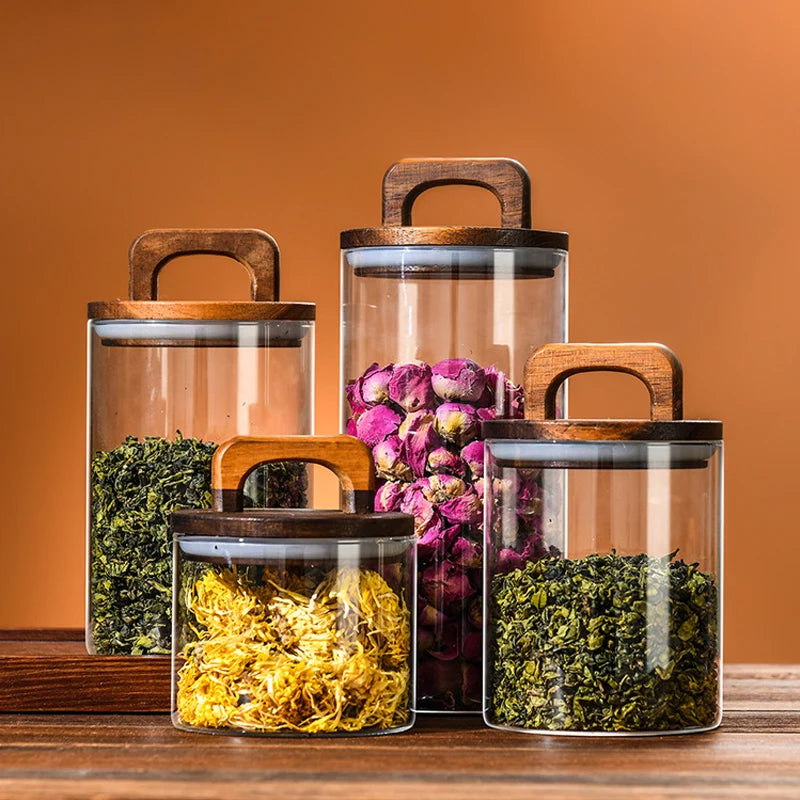
Wood Lid Glass Airtight Canister for Food Storage
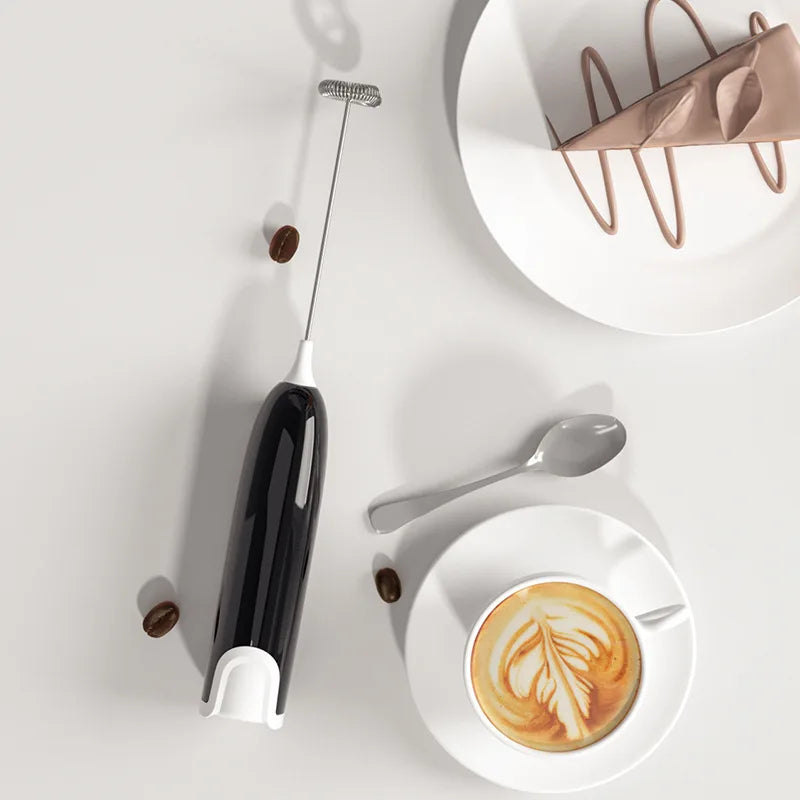
Hot & Cold Handheld Milk Frother

Stainless Steel Tea Infuser Strainer
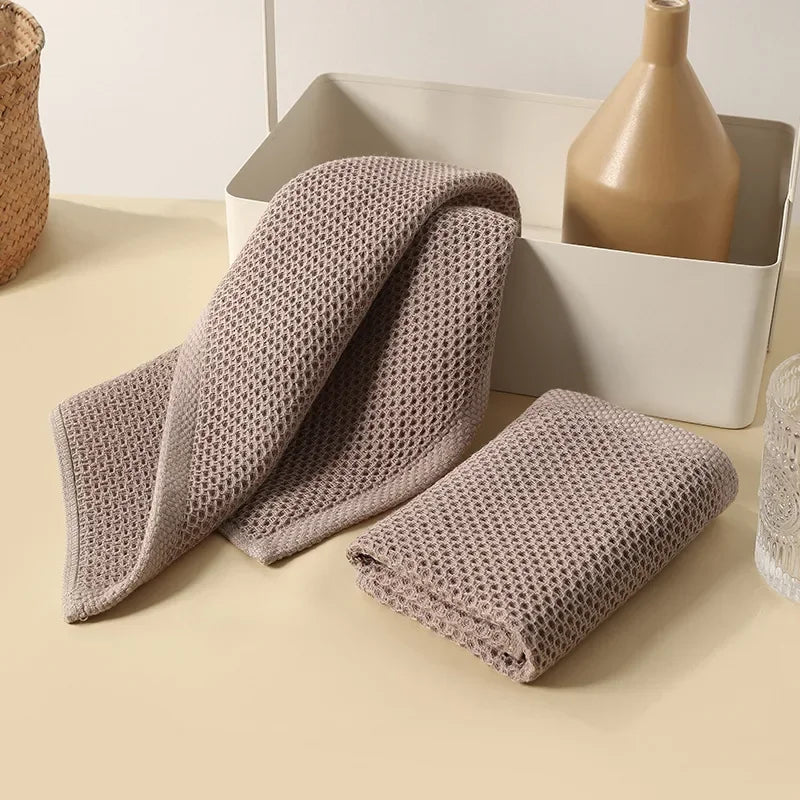
Premium Cotton Waffle Weave Dishcloths
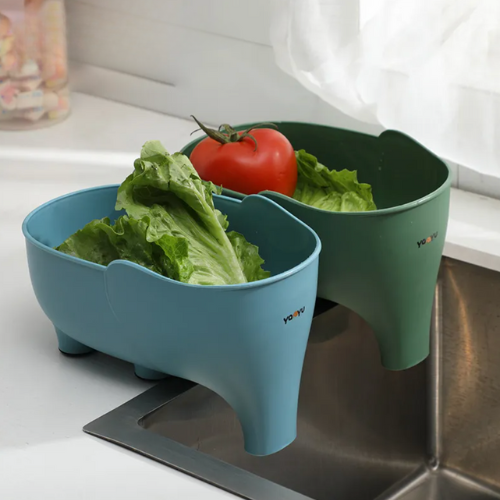
Elephant-Shaped Multi-Purpose Kitchen Drain Basket
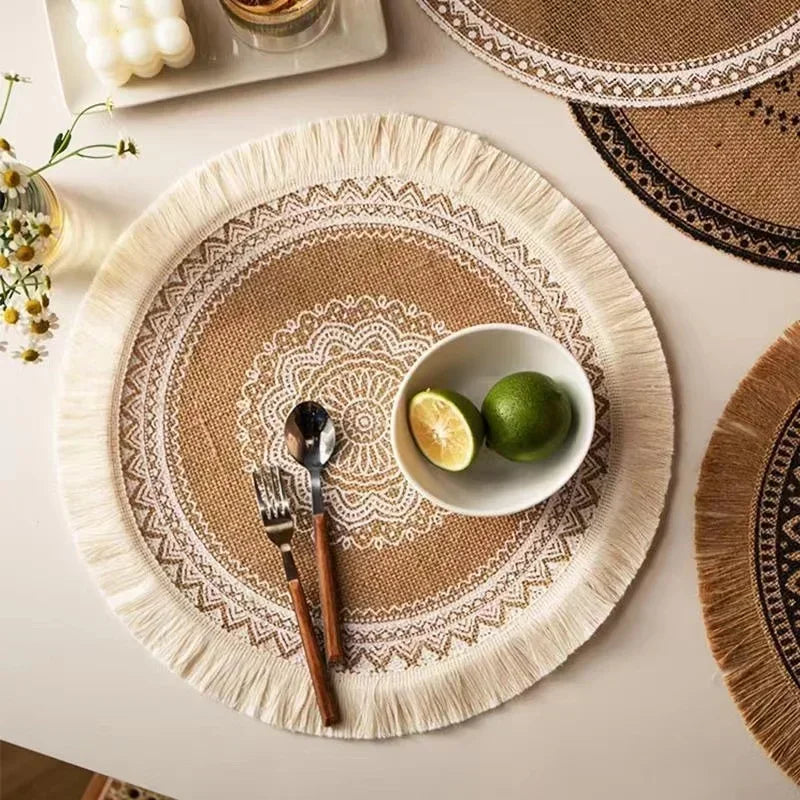
Boho Round Placemat with Jute Fringe
Video recipes.

- From the Oven
- Balkan Food
- Egyptian Food
- Japanese Food
- Austrian Food
- Lebanese Food
- Indian Food
Share the recipes you tried with the hashtag #pgrecipes and we will feature you on our site!


The Perfect Plate: Principles of Food Presentation
A delicious meal appeals to more of your senses than just smell and taste. It must also appeal to the eye. Imagine sitting down at a restaurant, and in front of you is a beautifully plated dish, thoughtfully laid out and presented.
A perfectly plated dish can upgrade your meal immensely. Through the strategic placing of ingredients, you will automatically view the meal as a high-value. You’re also more likely to enjoy the taste and hold a higher opinion of the meal.
Plating the perfect dish is both an art and a science. Chefs and cooking enthusiasts must explore their creativity and play with color and texture while placing foods to create a visual appeal.
How do you create the perfect plate to present your food? We’re covering the basic principles to get you started.

Start with a Canvas
To begin plating the perfect dish, you must start with a canvas, or in this case, a dish. While you may be tempted to pull any old plate from your cabinet, there is more to it than that.
You’ll want to consider the size, shape, and color of the plate you’ll use. Typically, chefs use white dishes because they contrast nicely with food. However, other colored plates can work very well, depending on the color of the food presented.
Your plate’s size should be large enough so your meal doesn’t crowd the plate, yet small enough to make the portion sizes look fairly filling but not too small. Pick a plate that’s too large, and your meal will seem insufficient. Pick a plate that’s too small, and your meal will seem like too much.
Culinary & Pastry Career Survey
What's your ideal culinary career? Answer 20 simple questions and see if your dream career gets revealed to you.

We’ve compiled of all of the essential questions into one handy guide: Career options, description of skill requirements, and more!

- Program of Interest Diploma in Culinary Arts & Operations Diploma in Professional Pastry Arts Diploma in Food Entrepreneurship Diploma in Plant-Based Culinary Arts Diploma in Holistic Nutrition & Wellness Associate Degree in Culinary Arts Associate Degree in Baking & Pastry Associate Degree in Food Entrepreneurship Associate Degree in Plant-Based Culinary Arts Associate Degree in Holistic Nutrition & Wellness Associate Degree in Hospitality & Restaurant Ops Mgmt Not Sure
Clicking the "Get the Guide Now" button constitutes your express request, and your express written consent, to be contacted by and to receive automated or pre-recorded call, texts, messages and/or emails from via phone, text, and/or emails by Auguste Escoffier School of Culinary Arts at the number(s)/email you provided, regarding furthering your education and enrolling. You understand that these calls , texts, messages and/or emails may be generated using an automated or pre-recorded technology. You are not required to agree to receive automated or pre-recorded calls, texts, messages or emails as a condition of enrolling at Escoffier. You can unsubscribe at any time or request removal of street address, phone number, email address via Escoffier website .
The Perfect Placement
Now that you have your canvas, it’s time to make some art. The placement of your ingredients is crucial for a perfect plate. This is where scientific facts come in to create aesthetically pleasing dishes.
The Clock Guidelines
Pretend your plate is a clock. Imagine the numbers along the edges to help guide where you should place certain foods. By following these rules, your meal will be evenly plated.
- Between 12 and 3, you should plate your vegetables.
- Between 3 and 9 is where your meat will sit.
- Between 9 and 12, you’ll present any starches included in the meal.
Stay Symmetrical
According to science, people find things that are symmetrical more attractive than asymmetrical. Use this principle to your advantage and make sure that your plate boasts symmetry.
Utilize White Space
Don’t underestimate the power of using white space on your dish. To create the perfect plate, spread out your food and leave parts of the dish empty. This will make your meal look cleaner, more elegant, and overall more professional.
Moist Ingredients First
Creating the perfect plate means paying attention to every detail. This also applies to what foods to present first.
Place moist ingredients, such as mashed potatoes or purees, on the dish before other elements. You can then place the rest of your meal on top of or beside these moist ingredients to keep them from shifting and ruining your perfect plate.
Always Use Odd Numbers
When serving individual foods, always plate them in odd numbers. While we recommended staying symmetrical with the entire presentation, the human brain finds odd numbers more pleasing than even numbers.
For example, if you’re serving ravioli, plate five instead of four or six to achieve the perfect plate.
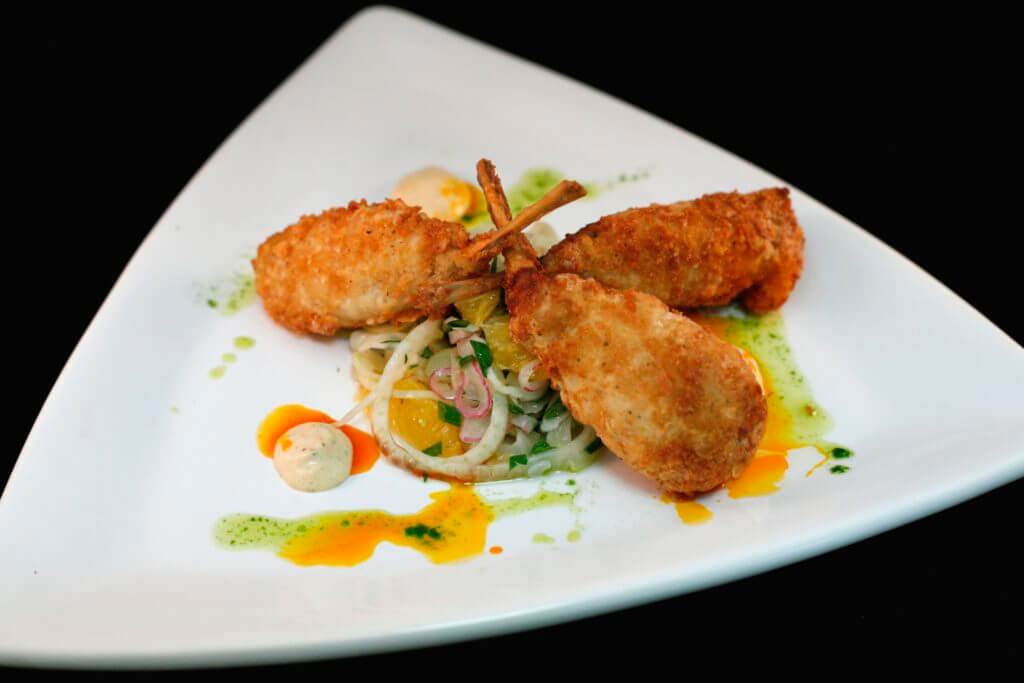
The Details
To achieve a well-plated dish, you must pay attention to the details. Your guests may not notice these intricate details, but these little considerations make a world of difference if ignored.
It’s time to bring back those memories of elementary school art class and the color wheel. When creating the perfect plate, use complementary colors. A colorful, bright meal will look more attractive and taste better than a dull, colorless dish.
Create a focal point and add a burst of color. You can use herbs, vegetables, or fruit as accent colors if the main dish seems a little bland. Lastly, utilize your white space by adding some color to pull the entire meal together.
A variety of textures on your plate will help present your meal attractively. Accentuate the different textures used through strategic placement.
For example, if serving creamy mashed potatoes, add sprinkled chives to create more depth and add another texture. You can do the same with meat by adding crushed nuts on top.
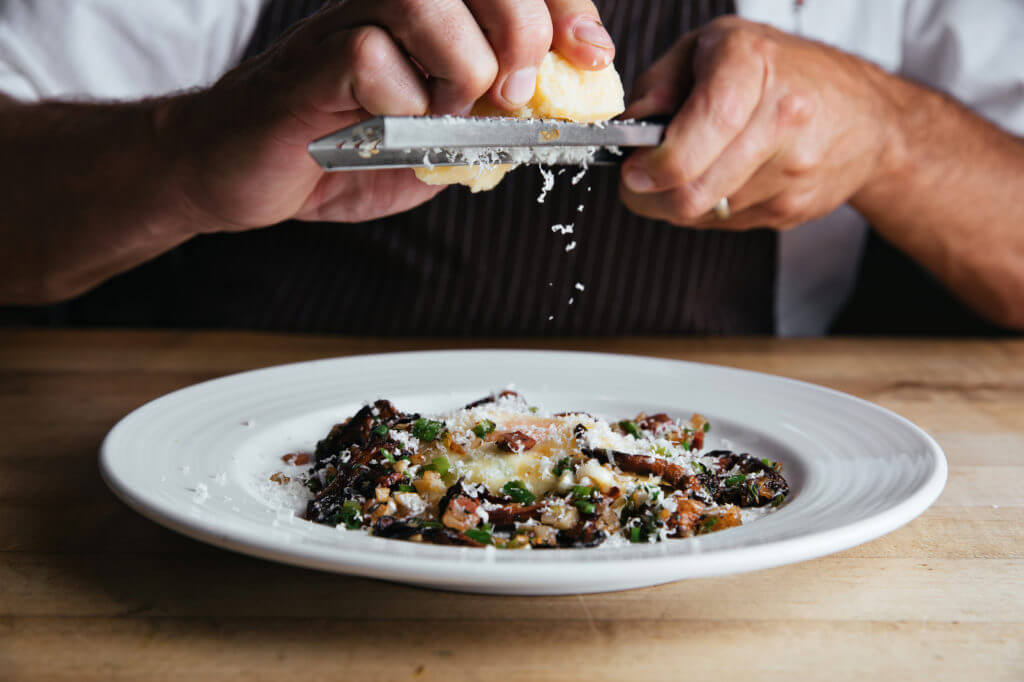
Create Tasteful Bites
While getting caught up in the perfect plate principles of food presentation, you can’t forget that your meal still has to taste good. Amplify the flavors in your meal with careful arrangements on the plate. You want the ingredients to go well together when someone takes a bite.
This thoughtful placement will give your guests a delightful flavor experience while adding another sense of beauty to your plate.
The Final Touches
You have your ingredients flawlessly placed on your dish to accentuate colors and texture and to amplify the flavors, but you aren’t done just yet! To achieve the perfect plate, you must consider some final touches.
Drizzle Your Sauces
Remember how we mentioned the importance of little details? Now it really shows when you simply drizzle sauce over your plate and pull it all together.
Think of your squeeze bottle as your paintbrush, adding the final touches to your canvas. Add accent dots to the white space, drizzle your sauce across the food, outline a ring on the plate’s outer edges, or create a unique design.
Let your inner artist shine through!
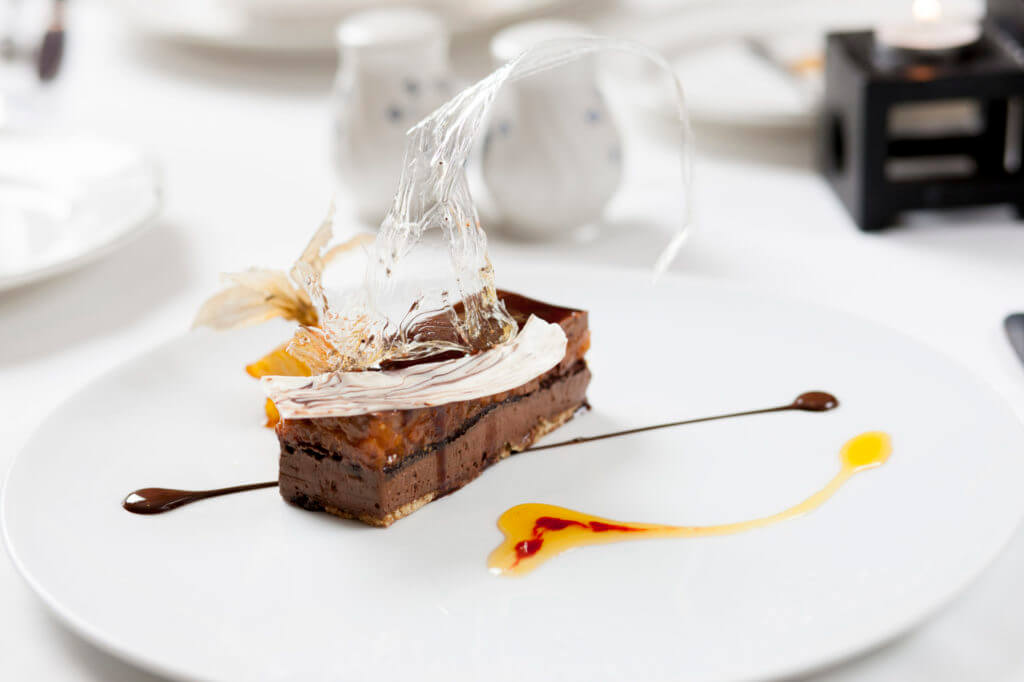
Thoughtful Garnishes
Adding a garnish to your plate can be a complete game-changer. However, you must be careful and strategic when using them. Some cooks tend to overdo it with garnishes.
While it’s a great way to add some more color and texture to the plate, they should be ingredients that will go well with your meal. You’ll want to avoid garnishes with a strong, overpowering smell, so as not to ruin the main dish.

A Quick Touch Up
They say a messy cook is a great cook. Unfortunately, that does not apply to perfect plating.
Before serving your dish, take a napkin to clean up any splotches or smears that may have accidentally shown up. Once you have cleaned up with crisp edges, you will have created the perfect plate using food presentation principles.
More Than Just a Pretty Plate
Cooking a great meal is more than just presenting an entree on a pretty plate. Embrace your enthusiasm for cooking and learn to make home-cooked gourmet meals in our online classes . With 320+ courses, you can learn the trade secrets and get one-on-one help from a professional Escoffier culinary school Chef Instructor.
Or take your passion further and earn an online culinary or pastry arts degree or diploma from Auguste Escoffier School of Culinary Arts.
If you enjoyed this article, read these next:
- Top Apps for Finding Recipes for Ingredients You Already Have
- How to Tournée Cut
- 4 Tips to Become an Artist in Plating
This article was originally published on March 06, 2019, and has since been updated.
- 4 Tips To Become An Artist In Plating
- Top Apps For Finding Recipes For Ingredients You Already Have
Degrees & Diplomas
America’s Test Kitchen Subscriber Support

- About FoodRavel
- Privacy Policy

Where food and travel meet…


How to Make Your Food Presentation Simple and Tasteful
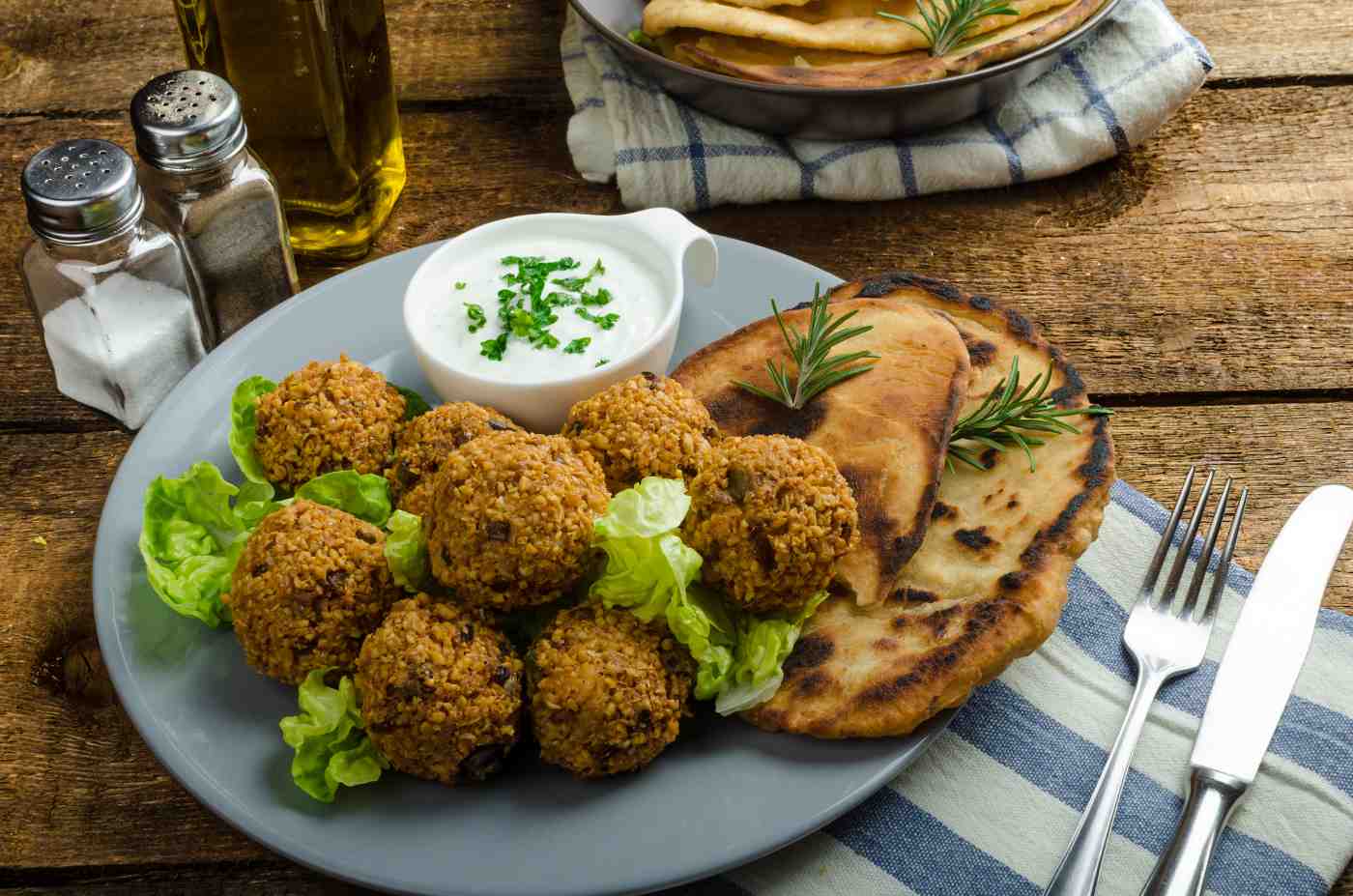
Are you looking for ways to present food in a way that makes it look appetizing without being too complicated? If yes, then read on. Food presentation is important because it influences our perception of the food itself. It also affects our appetite and mood. Presentations can either enhance or detract from the taste of the food.
Food presentation should be simple and tasteful. The goal is to create a visual feast that enhances the flavor of the food rather than distracts from it. Good food presentation will help you get your message across.
In this article, we’ll explain how to choose the right plate shape for presenting foods, why some plates work better than others and what tips to keep in mind when creating your perfect presentation.
Choose the Right Plate Shape
There are many shapes of plates that you can use to present food. You have round, square, rectangular, oval, oblong, triangular and even hexagonal plates available to you. Each has its own unique advantages and disadvantages.
- Round plates tend to be the most popular type of plate for presenting meals. It’s easy to move around with them and they’re great if you want to display a large number of dishes at once. However, since they commonly lack any side walls, serving a smaller amount of food can look awkward. No matter if you cook yourself or use a catering service, round plates are useful when you want to show off multiple dishes at once.
- Rectangular plates can be narrower than other types of plates. This means that dishes are easier to serve and it’s easy to balance them and move around with them. Rectangular plates are also good if you want to place two or three dishes next to each other.
- Square plates are wide enough to accommodate more food per dish, but since they don’t extend all the way up to the top edge, there’s no room for sauces or garnishes. That may not matter much if you plan to serve only one type of dish, but if you offer a variety of different flavors on a single platter, you won’t have room for anything else. Square plates are best for platters where you’ll be placing small amounts of various foods on a single plate.
- Oval plates are similar to square ones except that they have a wider bottom portion which allows them to hold a larger quantity of food. Oval plates are designed to support multiple servings of food. Ovals can carry as many as 10-12 items on a single plate. They come in both standard sizes and custom sizes. Your choice is based on how big your meal is going to be.
- Triangle plates are ideal for those who want to maximize space while minimizing clutter. If the triangles aren’t symmetrical, they won’t stack neatly into piles or towers. But they do fit well together on a single surface. Triangles are especially helpful if you want to include lots of food. If you don’t fill every inch of the plate with food, then triangles can help you save space without sacrificing organization.
- Hexagons add a special design twist to the other classic plate shapes. They can be easier to grip than round plates but allow for generous servings of food. They can also work to keep food warmer when they have a concave design that creates a gentle convex curve along their edges.
What Size Plate Should I Buy?
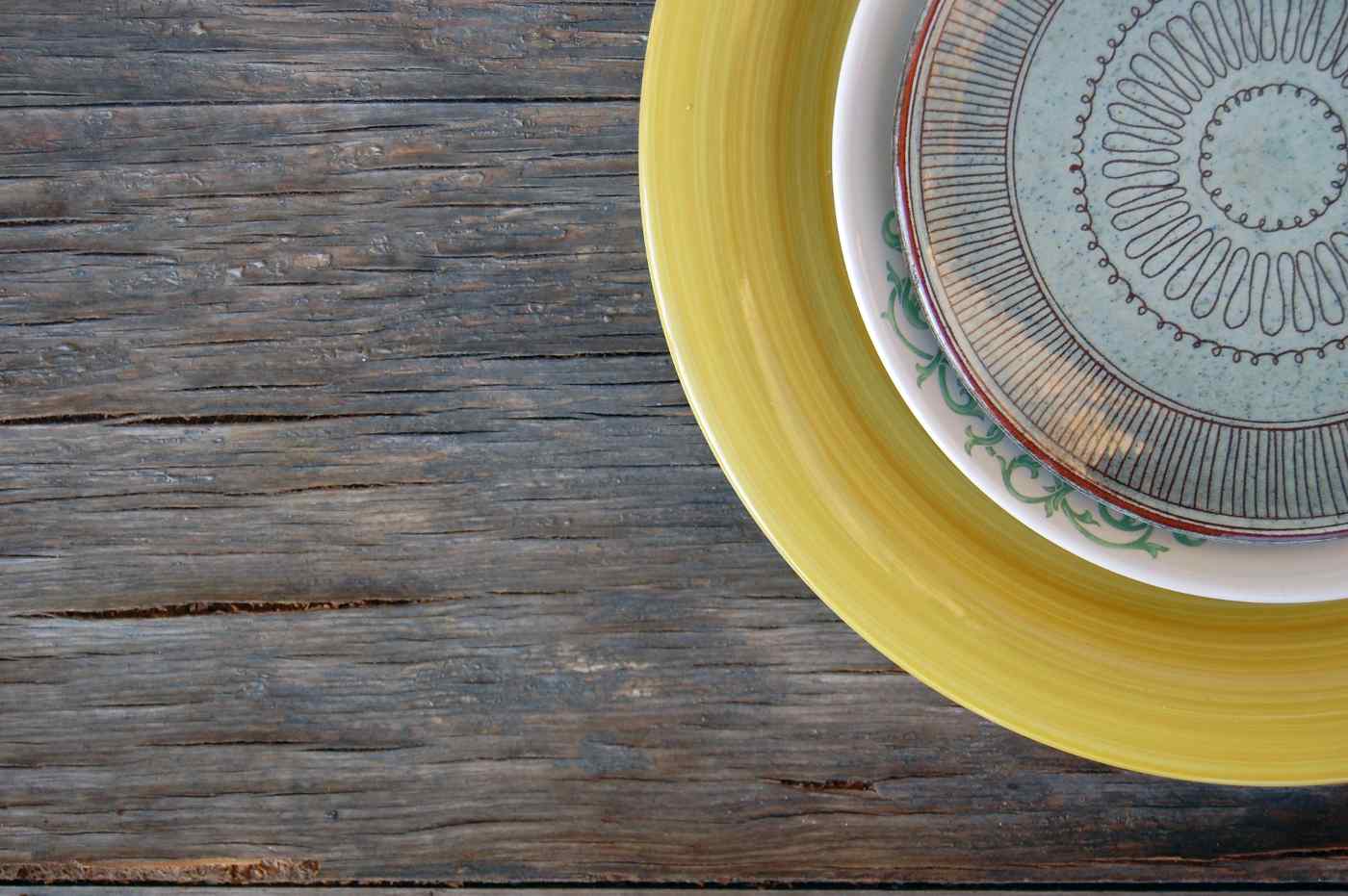
If you already have some plates you can use and you only need to pick up a few extras, then try to find the closest match to the plates you already have in your cupboard. If you’re picking up a whole new set, especially if it’s for a dinner party, know that it’s always safer to go with something bigger than you think you’ll need.
In addition to knowing how many people will be eating, you should also consider how large the dishes that you’ll be serving are. Large dishes require larger plates and vice versa. A cauliflower steak , for example, can measure about 6 by 5 inches (15 x 13 cm). You’ll be able to fit four steaks on a 12-inch (30cm) round plate.
The same dish would look too big if you tried to put it on a 14-inch (35cm) oval plate. Similarly, a large round of eggplant is about 4 by 3 inches (10 x 8 cm), so it would look out of place on a 12-inch round plate. And although a salad bowl is roughly 9 inches (23cm) across, you could actually use two bowls side by side to create a 20-inch round plate.
You’ll find most restaurants serving appetizers, salads, sides, main dishes, desserts like cakes , etc., on separate platters. This allows diners to choose just the portions they want. Large platters are great for parties because you can reuse them over and over again. When it comes to storing leftovers , serving bowls are more ideal than platters.
In addition to the size of the plates, consider the materials they’re made with, as well. Disposables are handy, but not great for the environment. In contrast, wooden platters are gorgeous, but more difficult to wash because they tend to get stained easily. On average, disposable platters cost only $1-$2 per person. However, you may also want to consider investing in stainless steel or ceramic platters. Although these types of platters are much pricier than disposables, they offer superior durability and long-lasting quality.
Tips for Making Your Food Presentation Ideal
It’s easy to see the difference between perfectly arranged food and food that looks sloppy. Here are some tips for making sure that your food presentation is perfect:
Use Good Lighting
Lighting is essential for cooking and entertaining, but it can also enhance the aesthetics of your food. Try to choose lighting that highlights different parts of your dish. Lighting from the side with some low candles gives a warm effect. Keep the lighting even across the table and avoid deep shadows.
Keep Your Tableware Organized
Food shouldn’t be stacked randomly all over the room. Make sure that your serving pieces are stored at a proper height and position so that each course is within reasonable reach and always within sight of guests.
Make Sure That Your Serving Pieces Match or Complement Each Other
The type of serving pieces you use says a lot about your overall style. Not all of us were lucky enough to inherit a full set of matching antique dishes, but it’s still a good idea to put together an ensemble of serving pieces that creates a unified effect. Choose dishes that complement one another when possible. For example, try pairing an elegant glass vase with a white porcelain plate instead of a heavy silver tray.
Choose Appropriate Serving Tools
Metal cutlery is the most common type of serving tool, but it’s not the only one. Consider flatware made of wood, bamboo or ceramic. Wood serves as a natural alternative to chrome and aluminum. Bamboo works well as a lightweight replacement for traditional silverware. Ceramic is heavier, but it makes it a nice option for anyone who’s sensitive to the taste of metals.
Don’t Forget the Napkin
Guests expect a certain level of service when visiting your home. Napkins are often used to wipe off spilled beverages, so make sure you keep plenty around. It’s also important to remember to remove any excess napkins before leaving the kitchen.
Food presentation isn’t just something you do to impress people. A beautifully presented meal tells guests that your home is neat and orderly. It shows that you care enough about your guests to invest time into making sure everything is exactly how they like it during their visit. So, don’t let your food look messy! Make sure that your food is always served properly by following this guide.
Image s: Depositphotos
Leave a Comment Cancel reply
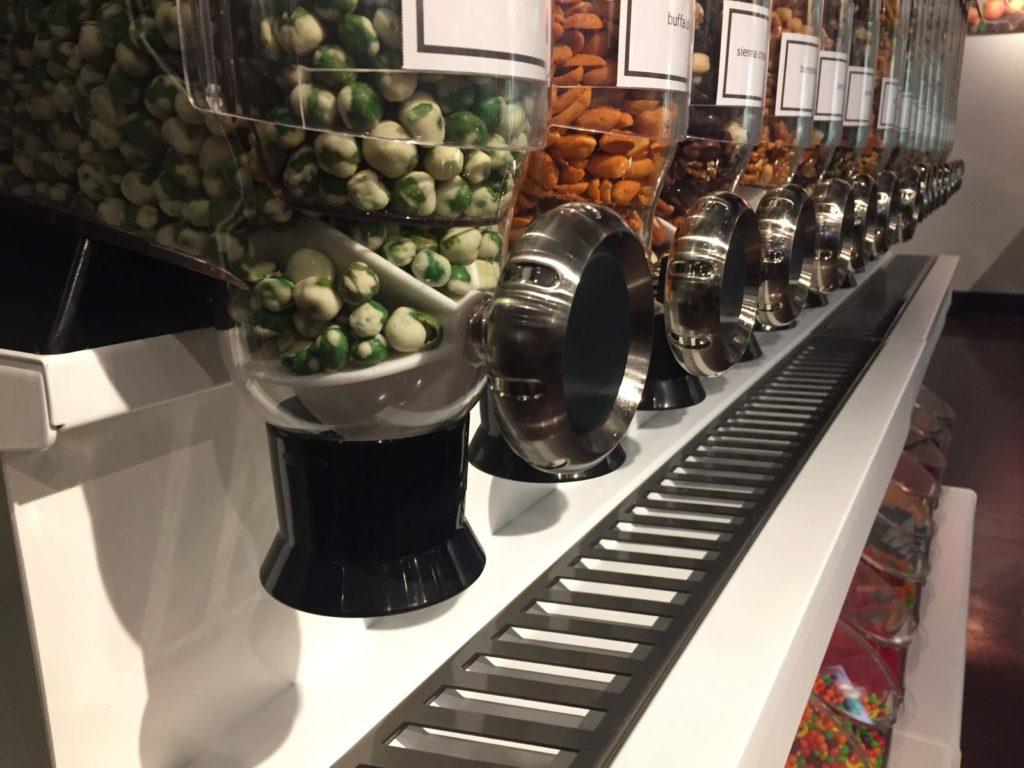
Home › Blog › Buffet Display › Mastering the Art of Food Presentation: Tips and Techniques for Stunning Displays
Mastering the Art of Food Presentation: Tips and Techniques for Stunning Displays
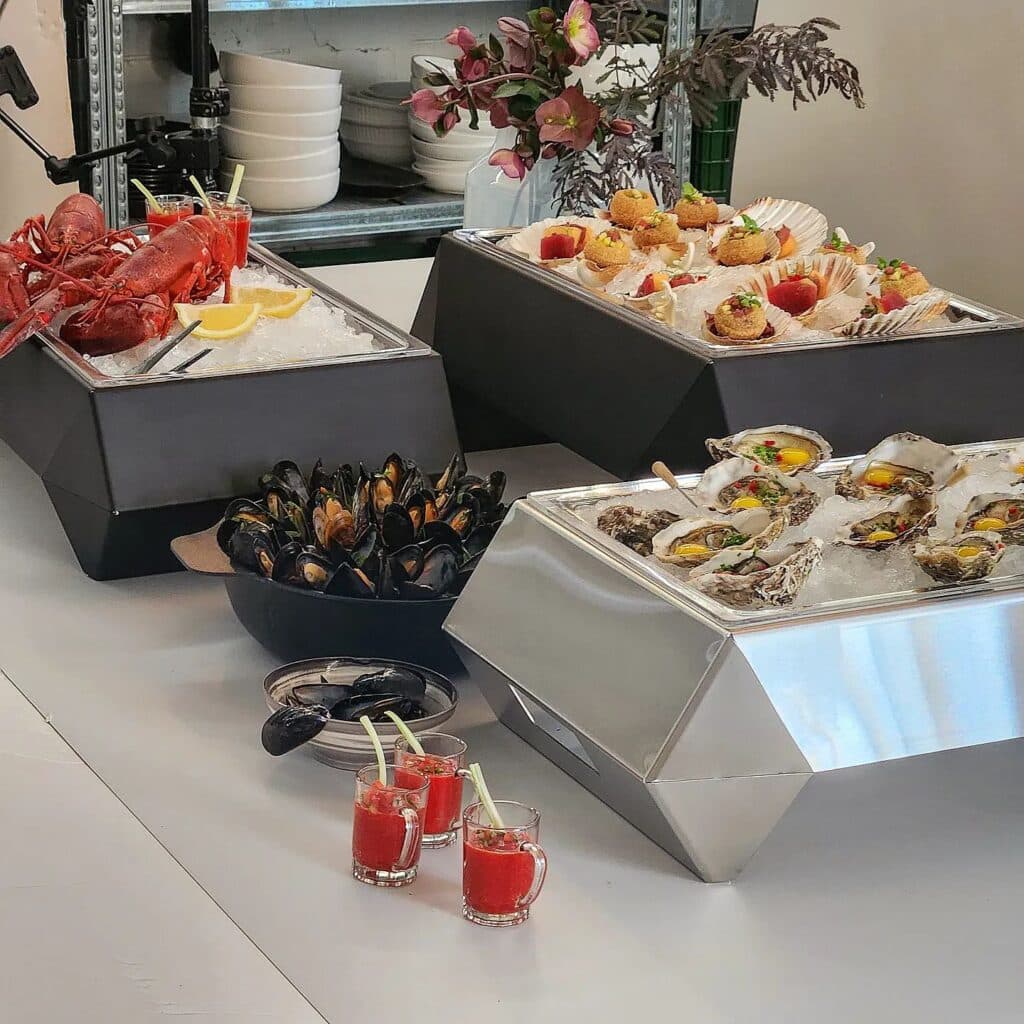
Through our years of experience, we have worked closely with various hospitality industry executives. All agree that the way food is presented plays a crucial role in influencing how it is perceived and enjoyed. While always taking into consideration the cost, the staff, the guest, and the purpose of each product purchased, the importance of design, luxurious set ups, and beautiful serving solutions is equally important. The hospitality industry, following the trend of course, has proven that a beautiful food presentation on the right Instagram account is sometimes worth way more than a thousand words. With the right presentation, you can turn an ordinary meal into a work of art that sparks conversation and leaves your guests in awe. But mastering the art of food presentation is no easy feat – it takes skill, creativity, and a lot of practice. Experienced food and beverage directors and executive chefs know that at its core, food presentation is all about conveying emotion through visuals. Whether you’re hosting a high-end catering event or a packed convention center, you want your food presentation dishes to evoke feelings of delight and happiness. To achieve this, you must learn how to arrange food in a way that looks appetizing and captures your audience’s attention. In this blog post, we wanted to share two tips and techniques for creating stunning displays that will make your food look as delicious as it tastes. From color theory to garnishing basics, we’ll arm you with the knowledge you need to take your food presentation game to the next level. So grab your chef’s hat and let’s get cooking!
Tips and Techniques for Eye-Catching Presentations
The saying “You eat with your eyes” is very true. That is why the way you arrange and plate your food can make a significant difference in its visual appeal and contribute to the overall success of the event. You need to make sure your food is presented in a clean environment, easily accessible, and offers what your guests are looking for. To help you create both a stunning and easy-to-use buffet table, we recommend you consider using the following plating techniques:
- Layering: Stack different ingredients in a visually appealing way to create height and depth on the plate. For example, layer slices of meat or vegetables with complementary colors and textures to create an interesting visual composition.
- Minimalism: Less can be more when it comes to food presentation. Use negative space on the plate strategically to draw attention to the main ingredients and allow their natural colors and textures to shine.
- Geometric Shapes: Play with shapes and patterns on the plate to create visual interest. Use cookie cutters, molds, or even a steady hand to create geometric shapes with ingredients like vegetables, fruits, or grains.
- Color Contrast: Use contrasting colors to make your dishes visually pop. For example, pair vibrant-colored ingredients with a neutral background or use complementary colors to create a visually appealing contrast.
And to accomplish these tips, we would like to discuss the techniques and products that can be used to create a stunning effect for your guests.
Food presentation and Arranging Techniques for Great Visual Impact
We all would like to create a powerful visual impact for our guests and make food stations and dishes more appealing. Unfortunately, oftentimes space may be limited to arrange the delicious food. We then would advise considering using the following techniques to create visually stunning displays:
- Symmetry: Arrange your food station symmetrically on the table for a clean and balanced look. For example, place identical pieces of food in a mirror-like fashion to create a visually pleasing pattern.
- Asymmetry: Create visual interest by arranging the station in an asymmetrical or random pattern. This can add a touch of creativity and uniqueness to your food presentation. Here you have more room to play around. Make sure you are not overcrowding the space.
- Height Variation: Play with height by using risers, such as the Rosseto Skycap risers, to elevate certain elements of your dish. This can create depth and visual interest on the plate.
- Negative Space: in case your station is minimal, use negative space strategically to highlight the main ingredients of your food presentation. This can create visual focus and draw the eye to the key elements of the presentation.
How can Rosseto help you create your food stations and buffet?
With the right buffet equipment and serving solution, great design and thoughtful engineering, Rosseto has proven you can create stunning food presentations.
Elevate your food presentation with Rosseto Skycap Risers
One of the easiest and most impressive ways to gain height on your tables is by elevating your dishes and trays using Rosseto Skycap risers and surfaces. These sleek and modern risers and surfaces are designed to add height and dimension to your food display. By placing your dishes on Skycap risers or surfaces connected to the risers, you can create an eye-catching arrangement that adds visual interest and sophistication to your presentation. Skycap risers and Rosseto surfaces are versatile and can be used with various types of dishes such as appetizers, desserts, and even main courses. The Skycap system is durable and designed with a modern contemporary look making them a perfect addition to your food presentation arsenal.
Versatility and durability with Rosseto Chafers
Rosseto chafers are not only practical for keeping food warm at the perfect temperature, but they also add versatility to your food presentation allowing you to display a variety of colorful and visually enticing creations. The sleek stainless-steel design of Rosseto chafers adds a touch of sophistication to your buffet set up, while keeping your food delicious, making them a perfect addition to your food display arsenal.
Whimsical Elegance with Rosseto Swan Risers
Adding unique shapes and textures to your food presentation can create a sense of artistry and drama, and Rosseto Swan risers are perfect for achieving that whimsical elegance. The graceful curves and unique shape of the Swan risers add an eye-catching element to your food presentation. These risers are perfect for showcasing small desserts, chocolates, or truffles, and some of our clients use the space for displaying silverware and napkins on a buffet.
Rosseto Serving Solution – Mix and match. Build your own food station
Mastering the art of food presentation is an essential skill for creating visually stunning displays that are sure to impress your guests. By using various plating, garnishing, and arranging techniques, you can elevate your food dishes to Instagram-worthy status. Remember to play with colors, textures, shapes, and heights to create visually appealing compositions on the plate. Use risers like the Rosseto Skycap risers to add height variation and create visual interest. With practice and creativity, you can become a master of food presentation and take your culinary creations to the next level.
We are here to help you through the product selection that is best for you. Our team is committed to top service and will guide you through the process of upgrading your serving solutions.
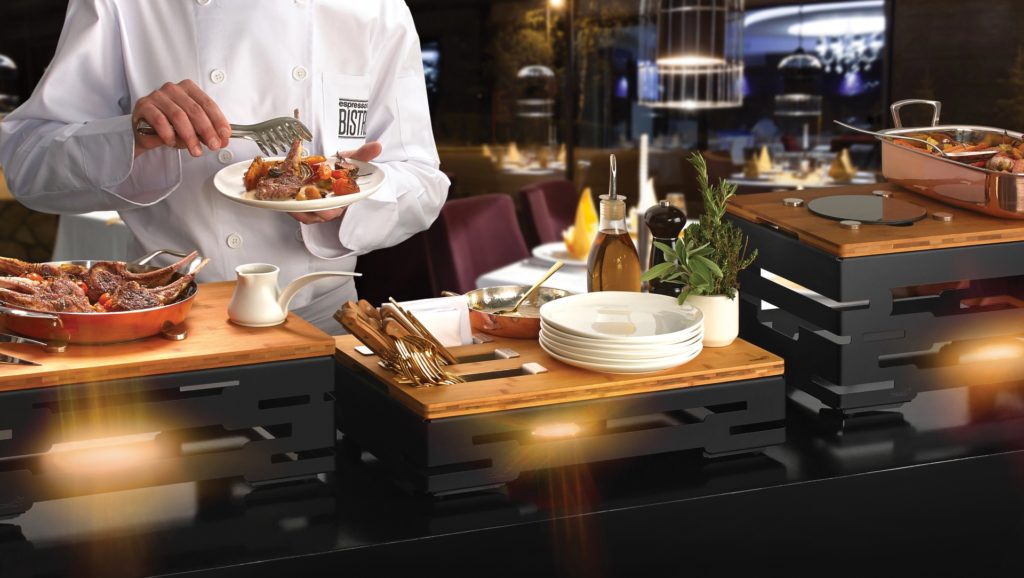
Consult our experts
" * " indicates required fields
- (847) 763-1215
- Address: 3714 Jarvis Avenue Skokie, IL 60076
- [email protected]
- (847) 763-1218

Please fill out the form below to view our latest catalog.
Safety catalog form.

Inspirationfeed
Inspiring and educating bright minds.
The Importance of Food Presentation, Explained by a Chef

Last Updated on February 22, 2024
Table of Contents
More than just taste
Most of us go through life enjoying our favorite foods as unfancy meals that can be found just about anywhere.
But for every foodie, there comes a time when we get to sample something prepared by a real pro. When you eat something created by a Chef with a real vision, every detail is just right.
The flavors will be impressive, of course, and the ingredients will be fresh, but the presentation is where things really get interesting.
Compelling food presentation is one of the main reasons for the rise of foodie social media culture.
For many restaurants and Chefs, making use of creative presentation doesn’t just provide guests with a great experience, it also serves as a smart marketing move, as the guests will be tempted to share photos of the meal with their friends and followers.
We’re going to explore food presentation, food carving, and why even amateur cooks should care about the visual element of every dish.
To get some answers, we talked to an expert in food presentation and food carving: Effie Noifelt. Noifelt has spent years as a Private Chef and master carver, creating elaborate displays from fruit and vegetables for festivals and special events.
Even if you’re not looking to do any carving or arranging yourself, you’ll gain a greater appreciation for just how much care and effort goes into making food not just taste great, but look great too.
How presentation can upgrade a meal
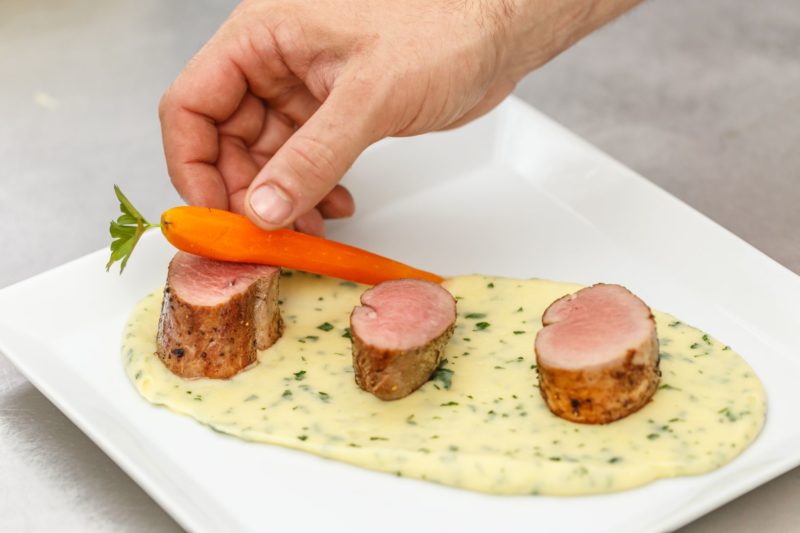
Presentation is important, plain and simple, but it still tends to fall by the wayside at many restaurants and even in some culinary schools.
We definitely need to be clear about this point: the food itself always takes priority, and we would never want to imply that presentation can make up for food that may be lacking in flavor and fresh ingredients. It’s not true.
However, ignoring the power of presentation represents a missed opportunity and a large one at that.
Eating is a multi-sensory experience, and seeing a dish that has been presented just so can make a culinary experience that much more memorable.
Still don’t believe us? Here’s a short test you can try. Grab yourself a simple snack– anything that’s not very complex.
A few crackers or toast will do fine. Now, before taking the first bite, hop on your phone or computer and pull up a photo of a gourmet meal or an elaborate dish created on a cooking competition show.
Your snack is going to taste better.
No, you won’t get all the complex flavors of your visual aid, but we trust you get the point.
Eating isn’t just the work of your mouth and taste buds, it also involves your sense of smell, touch, and sight, meaning your brain is in on the action as well.
Great presentation takes a meal to another level, and Noifelt agrees, noting that food offers so many different opportunities for mental and sensory stimulation.
Good presentation upgrades the dish. The plate itself becomes an artistic canvas to be filled with colors and textures. The colors have to be balanced with certain kinds of textures and direct the client to travel with the utensils to an experience that will result in stimulation of the other senses.
Presentation is important, but what’s the next step? Do only professionals get to delve into complex food presentations or can amateurs get involved, too? Let’s find out.
Learning presentation
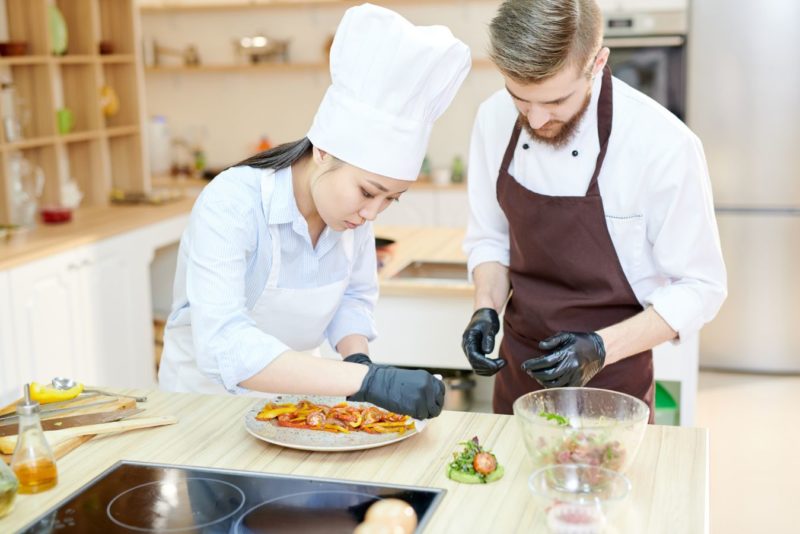
If you attend culinary school, you will learn a bit about food carving and a lot about food presentation.
Where it gets tricky is in the artistic side of the presentation. Food preparation, for example, is fairly black and white. There are safe food handling guidelines that must be followed, cooking temperatures are more or less pre-determined, and cooking times aren’t that flexible.
Presentation is based solely on creativity, so while certain techniques and trends can be taught, original ideas need to come from the individual.
Noifelt told us that food carving, in particular, is a balance between technical skill and creative thought.
It takes talent and a lot of practice time in order to learn intricate food presentation. You need to know how to use your tools for one thing. Food carving requires many different knives, for example. But you also need to come up with your own ideas. In the end, this is just as important.
So can amateurs get involved with food carving and creative presentation? Absolutely. The only catch is that you’ll need to be willing to gather the tools yourself and commit plenty of time in order to find your own style.
In the beginning, it’s acceptable to just mimic presentation styles you’ve seen on TV or online. In many cases, this will be enough to impress dinner guests, but getting to that next level is going to require introspection and plenty of experimentation.
Get creative! You can even draw quick sketches of your ideas before you step into the kitchen.
If you’re feeling really ambitious, order a few stylish plates and platters. You’ll be surprised how changing your canvas inspires fresh ideas.
If you’re looking for resources on how to get started with home cooking and baking , click these links for some helpful videos that explain the basics.
Theming your dish/carving

There are plenty of Chefs, amateurs and pros alike, who find one visual theme and stick with it through each and every meal.
This is fairly common in the world of fine dining, where for many years ring-based presentation has dominated.
When it comes to food carvings, flowers are one of the most common shapes.
But sticking to a unique theme for each event can really make a meal feel special.
Noifelt has created carvings for many different events, and as such, she nails down a theme for each long before reaching for the carving knives. Like many great artists, she even finds ways to incorporate elements of her culture into her work.
It definitely helps to choose a theme for each display. For a wedding, the theme would be hearts and flowers made from carrots and yellow melons. For seasonal events, I like to carve butternut squashes into birds, fish, and flowers. A large fruit like a watermelon offers a great opportunity for carving an image into the skin. As a tribute to my heritage, I love to carve ancient Greek gods in my pieces.
Once again, the key here is finding your own niche. Searching for your own unique ideas isn’t just exciting, it’s an important step on the way to becoming a true culinary artist.
Every meal is a chance to tell your story, even if the ingredients are common. Sharing something special with your audience makes the culinary experience fulfilling for everyone involved, which brings us to our next point.
The fruits of your labor

Many artists are somewhat removed from their audience. A director can’t sit in on every screening of their new movie. A painter doesn’t travel around as their work cycles through various museums.
But culinary professionals, on the other hand, are typically close at hand, and while not every Chef takes the opportunity to see the reactions of their guests, Noifelt views this experience as the best part of the job.
I’ve always loved watching the faces of the people tasting my dishes. Sometimes at work, I’ll step out of the kitchen and watch my clients as they take the first bite. I’ve received a number of rewards throughout my career, but the most rewarding moment is when I see someone enjoying a dish that was made just for them.
Whether you’re a professional Chef or just a home cook, this work is all about people. The goal is to always make someone happy. It might be a group of friends or it might be just yourself, enjoying a finely-crafted meal on a Tuesday evening.
Even if your presentations aren’t especially elaborate, diners will notice the effort, appreciate it, and maybe even snap a pic to post online.
Go forth and enjoy
In a sense, food presentation may be the perfect encapsulation of the human desire for expression and reinvention.
It involves taking something common (and necessary) and making it more interesting, more appealing and creative.
Humans don’t just cook to survive, we cook to make daily life fun, to play around with our pre-existing notions of what a meal should be. We find ways to make something as simple as food express beautiful, abstract concepts.
We hope you’ve come away from this article with a greater appreciation for the ‘art’ in ‘culinary arts.’ Maybe the next time you come across a food photo on social media, you’ll be able to acknowledge it as the art piece that it is.
Posted by: Igor Ovsyannnykov
Igor is an SEO specialist, designer, photographer, writer and music producer. He believes that knowledge can change the world and be used to inspire and empower young people to build the life of their dreams. When he is not writing in his favorite coffee shop, Igor spends most of his time reading books, taking photos, producing house music, and learning about cinematography. He is a sucker for good coffee, Indian food, and video games.
You are using an outdated browser. Please upgrade your browser or activate Google Chrome Frame to improve your experience.
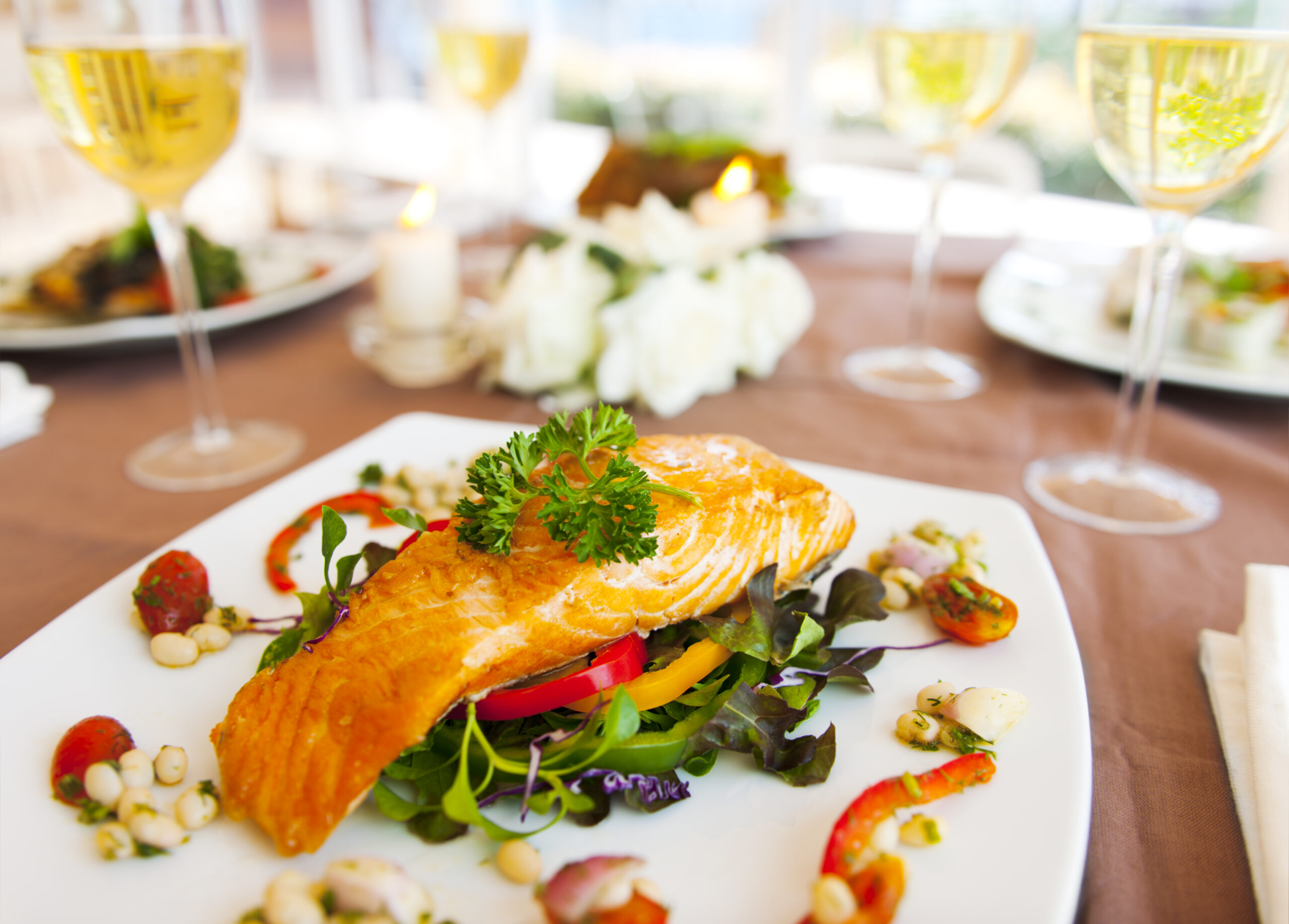
Why Food Presentation Matters
- Home Why Food Presentation Matters

Every experienced chef knows that eating is about more than just taste — taste, after all, comes after the initial sensation of actually seeing your meal. It may seem like a cliche saying, but people really do eat with their eyes . That’s the reason why you might start getting hungry after looking at pictures of well-presented dishes online. Therefore, the mere appearance of your food ends up being one of the main indicators of how pleasant your meal will be.
Also known as food plating, food presentation is a fascinating, complex subject with centuries of history. Though it’s often thought of as less important than the actual taste of a meal, it can be integral to increasing the flavor of your food and determining whether you enjoy it.
What Is Food Presentation?
Put simply, presenting food is arranging food to enhance how it looks on the plate. Consider the last time you saw an ad for a fast food restaurant. When you went to order the burger you saw in the ad, you may have been disappointed when you unwrapped it, seeing that it didn’t look nearly as perfect as it did on TV. Even though it tastes the same, the burger was more appetizing to you when it looked good. That’s the power of food presentation!
There are numerous factors chefs can consider while crafting a presentable meal:
- Colors: The colors of a meal’s ingredients play a significant role. While bright, vibrant colors can add energy, complementary colors create a contrast that adds visual layers to the meal, and too many dull colors may seem unappealing. By seeing what we eat, we can assume a food’s flavor before we even taste it. Additionally, red and green colors can tell us whether a food is nutritious or not .
- Textures: Texture adds depth to a meal — you can create it by using hard and soft foods or drizzling sauces as a finishing touch to add variety to a plate.
- Themes: A dish can even match designated themes. Maybe it’s the overall feel of your establishment or a certain food that corresponds to a time or area of the world. If you’re going for a specific look, you can blend colors, textures and organize food in a way that reflects that theme.
- Layering: Layering food refers to stacking it on the plate. Certain layering methods and height preferences can often make a meal more pleasing to the eye.
- Portions : Controlling the portions of a dish will also impact your experience. If a plate is piled high and crowded with food, you’ll likely be in a different frame of mind compared to when your plate is visible and neatly decorated with food.
- Decoration: Chefs will add garnishes to decorate their food and give it a final aesthetic appeal. Those small garnishes might seem tedious, but they can add necessary versatility and notes of flavor to a dish.
Ultimately, a neat, organized plate with thought put into the food’s aesthetic and appeal will enhance the eating experience.
The History of Food Presentation
Elaborate food presentations can be traced back to early centuries and was popular in countries like Macedonia. Musicians played to dancing women as food and drinks were served in wonderful excess. Cooked birds and fish were set in the belly of a pig, and food was served on silver and crystal platters alongside golden spoons and ivory bread baskets.
These were feasts reserved for only the wealthy and powerful, and the elaborate, excessive celebrations symbolized their status and class. In the 1800s, Marie-Antoine Careme, regarded as the first celebrity chef , brought the art of plating to the era of Napoleon Bonaparte. From that point, food presentation become increasingly important in cooking and baking.
Soon, the rise of modern cuisine came about with a special focus on the plate. In the twentieth century, chefs began to put emphasis on organization, moving away from heaps of food in a single dish. As a result, food presentation became more complex, relying on geometry and colors. Over time, more chefs, especially ones looking to serve high-end meals, began adopting food plating though to varying degrees of effectiveness.

Today, food presentation has become more important than ever. Thanks to social media, advertisements and cameras, stunning food presentations are instantly available to millions of eyes. In some cases, the way your food looks may be more important than how it tastes — a picture on a popular foodie’s Instagram page may encourage someone to eat at a particular establishment.
Though restaurants regard food presentation on different levels of importance, it’s evident that chefs, critics and customers alike place some value on presentation.
Why Does Food Presentation Matter?
While food presentation holds historical significance, you may be curious as to why it matters for your business. Here are several reasons why you should consider prioritizing food plating in your establishment.
1. Focuses on the First Impression
Today, a first impression is crucial in the food industry. With so much competition, creating a notable first impression can be the tool you need to set you above the rest. A well-crafted, tasteful-looking meal has the power to transcend the dinner plate — one picture can spiral through the digital world, gathering likes and reposts and bringing attention back to your dish. These visual platforms have emphasized the need for excellent food presentation.
With a focus on crafting a great food presentation, you can offer people an excellent first impression and have a chance to reach a broader audience.
2. Engages Multiple Senses
If you really think about how you eat, you’ll likely realize that eating is an experience that initiates much more than just taste. When your plate of food arrives at your table, you see the food, you smell the food and you may even hear some crackling or sizzling as it’s brought out to you. Each phase of the experience should be honed and refined to cater to the guest and make the experience as comprehensive as possible.

A meal may smell and taste delicious, but when the plate is a cluttered mess of confusing colors, it might take away from the smell and taste. Similarly, a dish with bland flavors could be brought up to par with a stellar presentation. Ultimately, presenting food to customers is a necessary step in the cooking process to ensure someone will enjoy their meal without hesitating based on the appearance.
3. Enhances the Meal
This is probably the most apparent reason food presentation matters — it’ll make the food taste better . If you’ve ever watched a cooking show where the focus is entirely on crafting a stunning, delicious meal, you may feel inspired to take some time with your next meal at home so you can savor the flavors. If someone can tell that the dish was organized with intent and design for the eye, they’ll probably be more likely to focus on how it tastes, and in turn, enjoy it more.
4. Shows Effort
In many ways, eating is a beautiful, time-honored act that helps us build connections with others. This element can often become obscured in the plethora of fast food and restaurant chains, but accepting food from a place of business means you’re trusting them to give you a good meal. By putting time into the presentation of your meals, you can help people have the best culinary experience possible.
How can you show a customer they can trust you and you’ve put effort and detail into every aspect of your meal? Create a unique food presentation. This is about more than just organizing food on a plate — it’s about sending a message to your customers. It communicates that you’re putting care into the meal and honoring that trust with quality presentation.
5. Separates One Dish From Another
If you offer a dish that’s similar to one that another establishment serves, creating a unique presentation can completely change the dish. With a simple twinge of aesthetic, you can lift your dish over one with the same ingredients and create a completely different experience without sacrificing any flavor.
6. Creates Personality
Crafting a food presentation is a way to inject personality into your dishes. It allows you to make a signature dish based on looks alone, and you could even create something lasting and iconic with a slight change in design.
7. Emphasizes Mindful Eating
All too often, people are rushing from one place to another, and the importance of eating can get lost in the chaos of the day. But more and more, people are discovering that you can add so much more value to your meals by simply stopping and focusing on the different flavors and textures of the food. This is something known as mindful eating, which emphasizes slowing down your eating to enhance tastes.

Inspire mindful eating by creating a food presentation that asks to be savored. Remember that food piled up on a plate doesn’t carry the same mindful inspiration that a thoughtful, delicate design does, with garnishes and decoration and a keen eye for colors and texture. When people see your presentation, they may slow down instinctively to reflect on the appearance, and in turn, they can really enjoy the flavors of your dish.
Food Presentation Tips
Discovering the importance and the meaning of food presentation is one thing — but to put it into practice can be an entirely different challenge. Here are some food plating tips for creating an excellent meal:
- Create height: Building a plate vertically instead of horizontally creates a neater appearance and will enhance the dish’s aesthetic.
- Use contrast: Use contrasting colors to add some boldness and stimulate your customers. Strong, unique colors will likely prime someone for interesting flavors. Instead of using artificial colors, you can use ingredients that are predisposed to striking colors, such as carrots, purple cauliflower and green beans.
- Match themes: To take your food presentation to the next level, you can match the theme of your food to your business. This is an effective way to show customers the level of detail in your establishment and create a certain feel of continuity and ease. When people eat, they usually want to be relaxed, and presenting a meal that matches the overall theme of where they’re eating can be just the strategy to complement their emotions.
- Serve small portions: A smaller portion will bring more attention to the aesthetic of the meal. Instead of just focusing on finishing what’s on their plate, a small portion inspires someone to savor the meal.
- Pick suitable dinnerware: Picking the right dining materials is just as important as organizing the food itself. Choosing the right dinnerware can mean anything from choosing the size and shape of the plate to finding the proper silverware and tablecloths.
These tips for food plating can help you can take your dishes to the next level, impressing customers and bringing more attention to your food. When you deliver and present food that you’ve put thought into throughout the cooking and plating process, you can ensure your customers will have a one-of-a-kind experience.
Choosing American Dining Creations
It matters how you prepare your food. From making a fantastic first impression to enhancing the meal itself, food presentation has various benefits that make it worthwhile to invest in. Whether you’re a business trying to show appreciation for your co-workers, a university crafting meals for students or a stadium serving unique food to hungry fans, food presentation will always have its place in the culinary experience.
For a company with an expert eye for food presentation, choose American Dining Creations. Since our start 80 years ago , we’ve evolved into a comprehensive hospitality partner, with a focus on fresh ingredients and delicious, high-quality food. Though the company has grown over the years, American Dining Creations remains family-owned and dedicated to excellent customer service. This focus allows us to mold our catering and dining services to the specifications of our customer’s needs , providing them a unique experience they can’t truly get anywhere else.
Contact Us to Learn More
At American Dining Creations, we use our hospitality knowledge to create a simple, convenient culinary service that quickly gives you what you need. We’re committed to sustainability and use locally-sourced food to help guarantee the freshness and ethics of our meals.
For comprehensive dining or catering services, choose American Dining Creations. We’ll help you create the experience you’re looking for, using fresh, healthy, sustainable ingredients, expert customer service care and an eye for appealing meals that will bring many benefits to your place of business. Contact us today!


Food Presentation Tips: 6 Food Plating Suggestions By Industry Experts
W hen it comes to culinary artistry, the way a dish is presented can be just as significant as how it tastes. They say we eat with our eyes first.
The artistic procedures of food plating and presentation turn a basic meal into an aesthetically pleasing and mouth-watering masterpiece.
Food is not only the important stargazing factor but its plating plays an important role too. The way food is presented on a plate can enhance its visual appeal, stimulate the appetite, and even elevate the perceived taste.
Chefs and culinary professionals understand the importance of thoughtful plating techniques to create visually stunning dishes that captivate diners.
Celebrity chef and founder of Palate Culinary Academy, Rakhee Vaswani, and author and consultant celebrity chef Ananya Banerjee give six food plating and presentation suggestions that will help you take your culinary creations to the next level.
Choosing the right plate: In food plating and presentation, choosing the appropriate dish is crucial to improving the whole eating experience. Your culinary masterpiece is shown on the dish as a canvas. The dish's visual appeal might be enhanced or diminished depending on its colour, shape, and size. To attain the proper composition and balance, various dishes call for different plate styles. How the components of the meal are organized and divided depends on the size and shape of the plate.
The star components of your cuisine might be better emphasized with the right platter. A textured or patterned plate can offer visual interest without detracting from the major pieces, as opposed to a plain white plate, which allows brilliant colours and detailed details to stand out.
Balance and Composition: Balance and composition are fundamental elements in food plating and presentation, contributing to the overall visual appeal and aesthetic harmony of a dish. It produces a visually appealing appearance that grabs guests' attention right away. You can ensure that the varied flavours and textures are evenly distributed around the plate by attaining balance and composition.
Effective harmony and composition highlight the dish's star ingredients or focal points. You may direct the diner's attention and highlight the star elements by placing the important items in strategic locations, which will result in a visually compelling presentation.
The placement of the components on the plate should convey a sense of movement and flow, leading the eye from one piece to the next. As diners explore the many flavours and textures on the plate, this visual journey makes the dining experience more engaging and interesting.
Attention to detail: Attention to detail is of utmost importance in food plating and presentation as it elevates the overall dining experience and showcases your professionalism and commitment to excellence. Every component on the plate is expertly arranged when even the slightest details are paid attention to, which improves the dish's aesthetic attractiveness. It indicates your commitment to making an enticing presentation that is aesthetically stunning.
Your culinary product exudes quality and precision when you pay attention to the little things. You show your dedication to delivering a superior dining experience by meticulously arranging each ingredient, garnish, and sauce.
Your culinary identity and brand are cultivated by paying attention to detail consistently throughout all of your plating endeavours. It creates a distinctive look and guarantees that each dish you serve adheres to a strict aesthetic and quality standard.
Utensil Placement: Utensil placement is an often overlooked yet essential aspect of food plating and presentation. Utensils that are arranged properly add to the plate's overall visual harmony. The diner's comfort and practicality should come first when placing the utensils. The diner will be able to easily switch between different components of the dish if the utensils are placed in a convenient location and within easy reach.
Keep in mind that utensil placement may change depending on the cuisine served, the setting, and individual preferences. To achieve a polished and aesthetically acceptable presentation, it is important to establish a balance between aesthetics, practicality, and cultural factors.
Layers & Heights: Using layers and heights in food plating and presentation is a powerful technique that adds dimension, visual interest, and sophistication to a dish. The use of layers and heights enables cooks to express their artistic flair and originality. It gives you the chance to try out various plating methods, set-ups, and presentations, turning the dish into a gourmet masterpiece.
In order to generate visual contrast on the plate, several pieces are layered with contrasting colours, textures, and shapes. Contrasting layers give the meal interest and excitement while also adding to its visual appeal.
Use Edible Garnishes: Using edible garnishes in food plating and presentation adds a touch of artistry and enhances the overall dining experience. Edible garnishes offer the chance to enhance a dish's bright colours, textures, and visual appeal. They can improve the plate's presentation, making it appear more alluring and delicious. In addition to adding to the aesthetic appeal of a dish, garnishes can also improve its overall flavour profile.
A burst of freshness and aromatic notes can be added with fresh herbs, microgreens, or edible flowers. The possibility to add contrast and balance to the dish is provided by garnishes. By introducing various colours, shapes, and textures, they can provide a contrast to the primary elements.
For instance, delicate, vibrant green herbs can be used to contrast with hearty, earthy proteins, or red chilli flakes can be used to provide a splash of colour to a creamy white sauce.
The significance of meal presentation and plating cannot be emphasized. Food has the ability to stimulate our senses and produce life-changing experiences in addition to merely sustaining our bodies.
A basic meal may be turned into a piece of art that satisfies the senses and provides amazing culinary experiences by paying attention to every detail, from the arrangement of components to the choice of colours and textures.

36 Free Food PowerPoint Templates For Delicious Presentations
- Share on Facebook
- Share on Twitter
By Al Boicheva
in Freebies
3 years ago
Viewed 146,861 times
Spread the word about this article:

Today is a day for something tasty. Here we have 36 free food PowerPoint templates that cover multiple topics such as restaurants, vineyards, coffee shops, recipes, cooking, diets, nutrition, and everything food-related. We looked everywhere to find and select the best ones and as usual, there is something for everyone and their upcoming projects.
Now let’s gather some delicious ingredients for your upcoming presentation! 🍕🍕🍕
36 Free Food PowerPoint Templates: Overview
- Restaurants and Coffee Shops
- Food Presentation
- Cooking Presentation
- Diet and Nutrition Presentation
- Food Campaigns
Just as a recipe has no soul and you, as the cook, must bring soul to the recipe, even the best presentation templates will fail to capture the audience without your creativity. 🍒
Restaurants and Coffee Shops PowerPoint Templates
We’ll start with 9 free presentations dedicated to restaurant businesses, pizza places, bakery shops, coffee shops, and vineyards. The templates include image placeholders, editable content, infographics, and marketing analysis slides.
1. Food Taste: Rich Free PowerPoint Template Food Service Portfolio

This is a beautiful free presentation of 27 high-quality slides by Indonesian freelancers. It’s a multipurpose presentation, however, it would fit a restaurant portfolio best. Amongst the slides, you will find About Us, Our Service, Our Portfolio, Work Slides, and Mockups. You can download this template from the Behance page that will redirect you to a Google Drive folder containing the PPT files.
2. Mexican Restaurant: Free PPT Template for Company Profile

If you own a Mexican restaurant, this PowerPoint template is perfect to boost your presentation. It has a lovely eye-catching design and 25 different slides that include a table of contents, About Us, History with timeline infographic, company philosophy, location, services, and many more. The slides even include a collection of thematic Mexican icons.
3. Luxurious Vineyard: Free PPT Template for Company Profile

Specially made for vineyards, this free PPT presentation has a very classy thematic design allowing you to share your values, philosophy, the location of your vineyards, and testimonials of loyal clients. The template is rich in infographics and has a very beautiful wine glass stain pattern decorating each slide. It also contains easy-to-edit graphics.
4. Restaurant: Free PowerPoint Template for Restaurant Presentation

This free PPT template for restaurants has 9 brochure design slides with image placeholders. The file doesn’t include the stock images from the preview.
5. Bakery Shop: Free Pitch Deck PPT Template

Bakery Shop is a free template for PowerPoint and Google Slides with a warm-colored design, decorated with soft shapes and flat illustrations. It has a pitch deck structure and humanistic sans serif font. The presentation includes 30 editable slides and 500+ icons.
- Slides : 30
6. Pizza Restaurant: Full Free Marketing PPT Template

Big and delicious, this free pizza restaurant PowerPoint template includes tasty images, lots of editable thematic infographics, and 48 different slides that cover everything. The template has a color theme and will automatically apply color when copied and pasted. Includes 135 editable icons.
- Slides : 48
7. Brown Stylish: Free Elegant Stylish Food PowerPoint Presentation

Rich and elegant free multipurpose PowerPoint and Google slides template with a calm color palette and delicate typography. It suits presentations about food, cooking, fashion, hotels, travel, cosmetics, and more.
- Slides : 25
8. Coffee Vibes: Free Coffe Shop PPT Template

Beautiful morning vibes that smell like coffee. Here we have a fresh abstract design free PowerPoint template for coffee shops, cafeterias, and breweries. The file includes multiple editable infographics, diagrams, and charts.
- Slides : 31
9. Coffee: Free Barista PowerPoint Presentation

Another rich with infographics and themes free presentation template for coffee businesses and coffee lovers. The design sports a lovely coffee color palette and patterned backgrounds that are also included in the file. Includes image placeholders.
Food PowerPoint Presentation Templates
Proceeding with the next main topic, below are 10 diverse free PowerPoint templates dedicated to food presentations, healthy eating, product presentation, the art of coffee, and thematic cuisine.
10. Modern Food: Free Contemporary Cuisine Presentation

Clean and modern free template for your food presentation in PowerPoint and Google Slides. The modern theme has a dark pink color accent and delicious food and cooking photos. You’ll find 25 editable slides, free infographics, and 80 icons, all customizable
11. Real Food: Free Healthy Food PowerPoint Presentation

Creative free template for multiple purposes like sharing recipes, and talk about healthy eating and nutrition. It has 25 PowerPoint slides with watercolor illustrations of food ingredients, free resources for data visualization, and specific slides for marketing and business plans.
12. Chart Palette: Free Food PowerPoint Presentation Template

This is a free chart template for PowerPoint and Google Slides with a lovely photographic design of vegetables, flowers, plants, and color charts.
13. Barista: Free Coffe Art PowerPoint Template

A sophisticated free PPT template for coffee lovers to author any presentation related to the art of coffee. Including standard and widescreen slide options, the template offers 6 slides with text and image placeholders, backgrounds, and a custom built-in color palette.
14. Fresh Food: Free Minimalistic PPT Template

A more simplistic multipurpose free PowerPoint template for widescreen presentations.
- Slides : 11
15. Special Burger: Free Burger Presentation Presentation

If you’re planning to present a new delicious item in your restaurant’s arsenal, this free presentation template was designed with that exact concept in mind. It includes infographics, such as price tables and mockups. Although the template shows a burger, you can easily replace the images and adapt it to your item of choice.
- Slides : 13
16. Fast Food: Free Multipurpose PowerPoint Template

Modern free PPT template for food presentation where you can add the point branch offices, the steps you use to prepare a plate of food, and info about yourself. The template includes images from Freepik that you can easily replace.
17. Pumpkin Design: Free Simple Multipurpose PowerPoint Slides

Sometimes, less is more. In case you don’t need a big presentation of 20 slides and wish just to list a few things, here’s a simple classic 4-slides pumpkin design template. It’s especially suitable for Pumpkin Day and Thanksgiving.
18. Free Korean Food PowerPoint Presentation

The main concept of this free presentation template is bibimbap, a traditional Korean food. This is good to explain the healthy food culture of Korean food with 48 rich infographic slides with thematic Korean photos and illustrations.
19. Free Local Food PPT Presentation Template
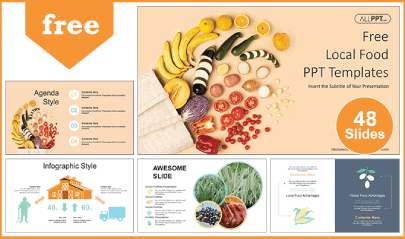
This free template is great for presentations on food, such as fresh organic ingredients and healthy local food. It includes 48 slides with lots of editable charts, diagrams, and tables, and 135 fully customizable icons. Includes image placeholders.

Cooking PowerPoint Templates
Here we have 4 very diverse designs, free presentations for businesses, chefs, recipes, and organic food.
20. Ellen: Free Chef PowerPoint Template

The master chef free template for any restaurant or chef who is looking to highlight their work. It has 25 customizable PowerPoint slides with food cooking graphics throughout the presentation.
21. Cooking: Free Multipurpose Cooking PowerPoint Template

A very simplistic multipurpose free food PPT template that you can use for any design related to cooking, sharing recipes, or business ideas.
22. Granny’s Recipe Book: Free Recipe PPT Template

Nobody cooks better than grandma and you can prove it in a presentation. This vintage vibe, free template offers the hand-drawn elements and recipe scrapbook style you need.
- Slides : 33
23. Free Organic Food Pitch Deck PPT Template

Pitch deck style free template for healthy eating and organic food presentation, with marketing analysis slides. It’s especially suitable for organic food restaurants and companies.
Diet and Nutrition PowerPoint Presentation
7 Free templates for multipurpose nutrition and diet presentations, healthy eating, fitness, and delicious freshly baked bread.
24. Mediterranean Diet: Free Nutrition PowerPoint Presentation

May is International Mediterranean Diet Month which celebrates the cuisine with is a plant-based food plan full of low in cholesterol and saturated fats, and high in fiber and omega-3 fatty acids delicious food. In this free PowerPoint template, you will find 12 awesome customizable slides with graphics and mockups.
- Slides : 12
25. Nutrition: Free Healthy Food PPT Presentation

To teach how to have a healthy life through eating fruits, vegetables, and proteins, this free template will do the trick. It has a fresh color scheme and customizable slides that you can adapt to any nutritional or food safety content.
26. Free Diet Plan Nutritionist PowerPoint Template

For dieticians and companies, or educators who wish to present their take on weight loss, detox, and healthy eating, this free template with modern design has 48 slides rich with themes, graphs, charts, and other infographics.
27. Free Freshly Baked Bread PowerPoint Template

If you have a bakery that wants everyone to know about your delicious freshly baked bread and related treats, you have 48 free slides to go wild. It also includes 135 different icons and editable data-driven charts.
28. Venu – Free Nutrition & Health PPT Presentation

By itself, this free PowerPoint template can give you ideas on how to structure your presentation on healthy eating and nutrition. It features infographics, highlighted data, quotes, and other customizable elements. In addition, you will also find awesome flat-style colorful icons of food ingredients.
- Slides : 21
29. Free Organic Food PowerPoint Presentation

A customizable free PPT template with 48 slides for presentations related to healthy food ingredients.
30. Free Fresh Green Broccoli PPT Template

This free powerpoint template is a design of a delicious fresh food concept with various shapes related to food.
- Slides : 60
PowerPoint Templates for Food Campaigns
And last, we gathered 6 free food campaign templates that are ideal for promotion and marketing presentations.
31. Fruits: Free Marketing Campaign PPT Template

Free marketing presentation template with sweet fruity patterns and vector-based illustrations.
32. Food Day Campaign Free PPT Template

Food day campaign free marketing .ppt template with watercolor illustrations and infographics.
- Slides : 27
33. Free World Cocktail Day PPT Presentation

Editable free template with 32 slides and infographics dedicated to the art of cocktail making. It’s designed for PPT and Google Slides.
- Slides : 32
34. Free Festival PowerPoint Presentation

Spargelzeit is a celebration in Germany during spring that honors asparagus and menus are prepared with them as the main ingredient.
35. International Hummus Day Free PPT Template

Hummus-inspired presentation design with photos of hummus dishes and tablecloth background.
- Slides : 34
36. Free Multipurpose Pizza PowerPoint Template

And last, something fun: a free PowerPoint template that teaches fractions with pizza slices.
- Slides : 24
Final Words
Alright, we did it and we feel kinda stuffed with all these delicious free food templates we managed to find. Now you have the ingredients, all it takes is the chef’s kiss of your creativity to deliver an amazing presentation.
In the meantime, if you’re up to some more hunting, why not check other free PowerPoint resources.
- 120+ Free Food Illustrations for Personal and Commercial Garnishing
- 100+ Free Food Vector Graphics and Characters for Tasty Projects
- Modern Restaurant Menu Designs that Boost the Appetite

Add some character to your visuals
Cartoon Characters, Design Bundles, Illustrations, Backgrounds and more...
Like us on Facebook
Subscribe to our newsletter
Be the first to know what’s new in the world of graphic design and illustrations.
- [email protected]
Browse High Quality Vector Graphics
E.g.: businessman, lion, girl…
Related Articles
800+ free silhouette graphics to download now, free oktoberfest graphics collection to make you see double, free vector graphics on freepik by graphicmama, 300+ free illustrations for your next design project, 200+ free instagram story templates to grab the attention in 2022, 500+ free and paid powerpoint infographic templates:, enjoyed this article.
Don’t forget to share!
- Comments (1)

Al Boicheva
Al is an illustrator at GraphicMama with out-of-the-box thinking and a passion for anything creative. In her free time, you will see her drooling over tattoo art, Manga, and horror movies.

Thousands of vector graphics for your projects.
Hey! You made it all the way to the bottom!
Here are some other articles we think you may like:

Free Vectors
30 free vector images on pixabay by graphicmama.
by Bilyana Nikolaeva

44 of The Best Free Handwriting Fonts to Try in 2022
by Lyudmil Enchev

31 Free Modern Powerpoint Templates for Your Presentation
Looking for design bundles or cartoon characters.
A source of high-quality vector graphics offering a huge variety of premade character designs, graphic design bundles, Adobe Character Animator puppets, and more.

IMAGES
VIDEO
COMMENTS
4. Play with Textures. Using textures is a great way to create depth and dimension with your food presentation. This can be as simple as adding a delicate foam or sauces with a crunch on top. You can also drizzle dressing sparingly around the plate and place the meat in the middle. 5.
Smeared Accent Dots Plating Technique - Alternate between two sauce accent dots in a curved line along the side of your plate. Then, take a small plating wedge and place it at the center of the first accent dot in your row. Drag the plating wedge through the accent dots, creating a multicolored, single-sided edge.
January 17, 2024. The art of food presentation goes way beyond garnishing. It's a visual way to introduce the meal's culinary story and give the diners a glimpse of the flavor that awaits them. If you've ever heard the phrase "one eats with his eyes first", in the culinary world, this statement is unequivocally true.
Create a Visual Picture. Going back to the plate-as-canvas analogy, create a picture on the plate. Put your main food item in the center and arrange everything around it. Make sure to use space to your advantage and to keep your plate from looking crowded. Your food picture should have a pleasing balance of flavors, colors, textures, and heights.
Well-executed food presentation can create a sense of professionalism in the mind of eaters and offers an exciting element of a meal that many can't recreate with the same skill in their own cooking efforts. In the digital age, strong presentation can also make dishes more apt to be photographed and shared via social media.
Examine the edges of the plate for fingerprints and smudges. A great way to clean up the edges of a plate is to dip a paper towel in a cup of water with a dash of white vinegar. Wipe the rim of the plate so that no food residue or prints are visible. This gives your presentation a professional touch. Part 4.
Creative Food Presentation Ideas, Tips & Tricks. A creative presentation of food is the final touch to a meal. Here are thirteen tips and tricks for presenting food, ranging from simple dishes to fine dining: Edible Flowers. Nothing classes up a dish like dainty flowers. Flower petals add pops of color in salads, soups, desserts, and even entrees.
The Art of Food Presentation: Elevate Your Culinary Creations. Uncover the secrets of Food Presentation and learn how to elevate your culinary creations to a new level. Discover the importance of plating and the techniques used by professionals. Food presentation is an art that marries culinary skills with aesthetics.
Cut meat horizontally. England also recommends "fanning" or shingling out slices of meat to show off its quality. "Slice your meat on a 45-degree bias, and also slice against the grain of the meat for a more tender cut," he says. "Show off that perfect medium-rare steak!".
When creating the perfect plate, use complementary colors. A colorful, bright meal will look more attractive and taste better than a dull, colorless dish. Create a focal point and add a burst of color. You can use herbs, vegetables, or fruit as accent colors if the main dish seems a little bland.
Treat the plate as a canvas: Envision the plate as your artistic canvas, employing negative space to accentuate the overall presentation. Allowing the food to breathe by leaving empty spaces between the components enhances visual appeal. 5. Maintain portion control: Strive for balance by avoiding overcrowding the plate.
The top food presentation and plating techniques. Create height on the plate. Cut meat horizontally. Play with textures. Use contrasting colours. Match presentation to the restaurant theme. Choose the right plates. Serve smaller portion sizes. Use edible garnishes and decorations.
Food presentation should be simple and tasteful. The goal is to create a visual feast that enhances the flavor of the food rather than distracts from it. Good food presentation will help you get your message across. In this article, we'll explain how to choose the right plate shape for presenting foods, why some plates work better than others ...
The visual presentation delights customers' eyes before they even take their first bite. An artful presentation demonstrates care, creativity, and skill. It can turn an enjoyable meal into an unforgettable dining experience. TABLE OF CONTENTS. Food Presentation Plating Like A Pro. Start With Quality Ingredients.
Restaurant news, advice, and stories — right in your inbox. Join the fun. We promise not to spam you, swear. We'll handle your info according to our privacy statement. Learn how to craft the perfect plate in your restaurant with these restaurant food presentation hacks from Chef Jim Berman.
Mastering the art of food presentation is an essential skill for creating visually stunning displays that are sure to impress your guests. By using various plating, garnishing, and arranging techniques, you can elevate your food dishes to Instagram-worthy status. Remember to play with colors, textures, shapes, and heights to create visually ...
2. Food presentation ideas. Edible Flowers: Using edible flowers as a garnish on your dishes can elevate their appearance and taste. Choose seasonal blooms like roses, lilies, chamomile, lavender, or marigolds. Also, cut them into little pieces before serving and sprinkle them on top of the meal.
But the concept of food plating has some definite dos and don'ts that form the critical part of the rule book of Food Plating. 1.Treat your plate as the canvas for your art. 2.Always follow the ...
Elements of the Plate. A plate should engage the senses and draw the diner into it much as a painting will draw in the observer. The dish should be carefully planned to balance tastes, textures, colors, and cooking methods. Intertwine the components to bring a sense of composition and harmony.
Good presentation upgrades the dish. The plate itself becomes an artistic canvas to be filled with colors and textures. ... In a sense, food presentation may be the perfect encapsulation of the human desire for expression and reinvention. It involves taking something common (and necessary) and making it more interesting, more appealing and ...
Ultimately, presenting food to customers is a necessary step in the cooking process to ensure someone will enjoy their meal without hesitating based on the appearance. 3. Enhances the Meal. This is probably the most apparent reason food presentation matters — it'll make the food taste better.
Contrasting layers give the meal interest and excitement while also adding to its visual appeal. Use Edible Garnishes: Using edible garnishes in food plating and presentation adds a touch of ...
6. Pizza Restaurant: Full Free Marketing PPT Template. Big and delicious, this free pizza restaurant PowerPoint template includes tasty images, lots of editable thematic infographics, and 48 different slides that cover everything. The template has a color theme and will automatically apply color when copied and pasted.
Food presentation. A modern presentation of Irish food: grilled duck breast and venison with a poached egg, carrot, beetroot and wild garlic. Food presentation is the art of modifying, processing, arranging, or decorating food to enhance its aesthetic appeal. The visual presentation of foods is often considered by chefs at many different stages ...
Through SUN Meals, kids of all ages can eat meals and snacks during the summer at no cost at schools, parks, and other neighborhood locations. SUN Meals may have a different name where you live, but the benefit is the same: meals for kids and teens, and opportunities to participate in fun activities. Every child aged 18 and under can enjoy SUN ...